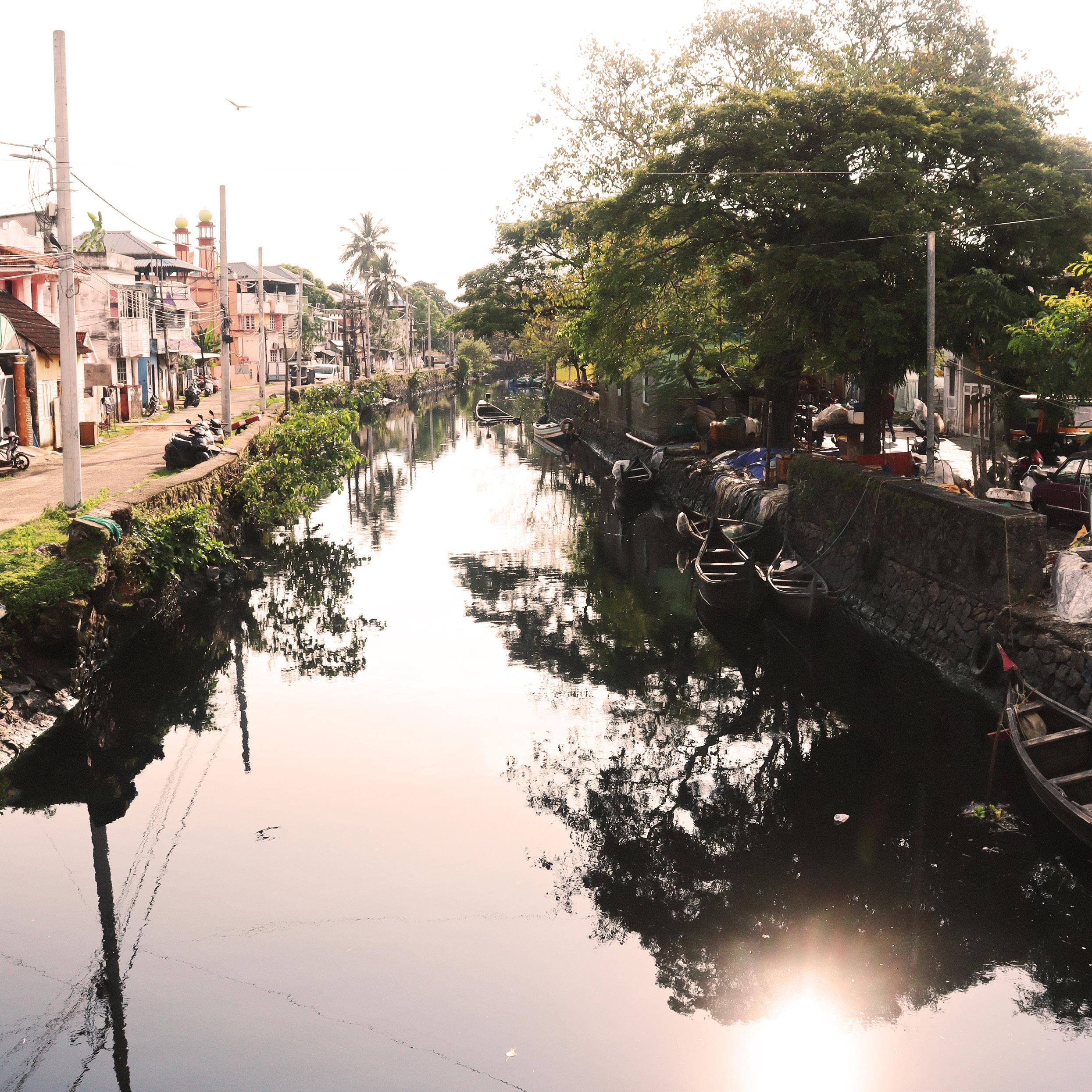
 (Re) gaining Ecological Futures Kunnumpuram, Kochi, India
Urban Ecological Planning: Project Course Project Report, Autumn 2022
(Re) gaining Ecological Futures Kunnumpuram, Kochi, India
Urban Ecological Planning: Project Course Project Report, Autumn 2022
AAR4525 - Urban Ecological Planning: Project Course
Executive Summary, Autumn 2022
Urban Ecological Planning Master’s Programme
Department of Architecture and Planning, Faculty of Architecture Norwegian University of Science and Technology (NTNU), Trondheim, Norway
Course Coordinator: Supervision Team:

Gilbert Siame Associate Professor, NTNU
Gilbert Siame Associate Professor, NTNU
Rolee Aranya Professor, NTNU
Mrudhula Koshy Assistant Professor, NTNU
Riny Sharma Assistant Professor, NTNU
Booklet Layout:
Mrudhula Koshy Assistant Professor, NTNU
Vija Viese Research Associate, NTNU
2 |
Kunnumpuram, Kochi, India | (Re) - Gaining Ecological Futures
(Re) - Gaining
Ecological Futures
Urban Ecosocial interrelations Kunnumpuram, Fort Kochi, India
Authors Maria Magdalena Mühleisen Stavanger, Norway Eloïse Redon Bordeaux, France Nahida Yeasmin Tonni Rajshahi, Banglaesh
Mohammadreza Movahedi Tehran, Iran
(RE) - GAINING ECOLOGICAL FUTURES - KUNNUMPURAM -YOUTUBE
| Kunnumpuram, Kochi, India | (Re) - Gaining Ecological Futures

3
Preface
After two years of pandemic-related restrictions which affected many aspects of the Urban Ecological Planning Programme (UEP), and especially its first semester obligatory fieldwork, the 2022 fieldwork under the Urban Ecological Planning: Project Course was conducted in Kochi, India. This was a planning studio project with emphasis on international mobility and knowledge exchange among students from India, South Africa, and Norway. The project forms a core component of the two-year International Master of Science Programme in Urban Ecological Planning under the Department of Architecture and Planning at the Faculty of Architecture and Design at the Norwegian University of Science and Technology (NTNU). The 2022 project activities rejuvenated the UEP passion and curiosity about challenges and opportunities being faced by cities of the Global South. Students spent eight weeks working in Kochi city in the Southern Indian state of Kerala. The project was structured and framed to contribute directly to the UTFORSK funded Norway-India-South Africa (UTFORSK-NISA) student and staff mobility project on localisation of Sustainable Development Goals (SDGs). Thus, the project involved NTNU, School of Planning and Architecture (SPA), New Delhi, India, All India Institute of Local Self Government (AIILSG) and the University of Cape Town (UCT) in South Africa. This report represents a major output from the integrated effort of communities, bureaucrats, and most importantly, the students from NTNU, SPA and UCT.
This project report is an outcome of studio work done by NTNU students. The report provides detailed information about students’ experiences, learning and context-informed recommendations for improving living conditions on study sites in Kochi city.
4 | Kunnumpuram,
| (Re) -
Kochi, India
Gaining Ecological Futures
Students’ learning and recommendations are based on UEP’s teaching philosophy of experiential learning. Students’ exposure to an unfamiliar context poses several challenges while working on an academic goal but it also provides the necessary ‘triggers’ for learning that is simply not possible in traditional planning studios that are of shorter duration and have less emphasis on being out in the field.
The project report is informed by methods that allow students to propose solutions to complex but interlinked urban problems based on area-based planning and participatory planning approaches. This year’s report emphasises some of the most important UEP values and topics that include inclusive urban planning and development, ecological integrity in cities, and sustainable urban livelihoods and accessibility. By working with local communities, local and international stakeholders, students identified, analysed, articulated complex issues, and made realistic recommendations to improve living conditions on specific study sites.
The students were divided in 4 groups and 2 of them worked in Fort Kochi while others in Ernakulam areas of Kochi city. Fort Kochi is a seaside historical area known for its Dutch, Portuguese, and British colonial architecture, and heritage and fishing. It is a significant tourist area for the Kerala State. On the other hand, Ernakulam is a sprawling residential and commercial hub well known for Marine Drive and a busy waterfront. Zeroing in on specific sites, the reports deeply reflect on the urban everyday life experiences, challenges, and opportunities for people in Kochi. While retaining the area-based planning approach, students’ work was based on the overarching theme of urban informality and guided by three themes: ecological vulnerability, urban markets, and urban mobility. As an outcome of their learning process, students prepared four reports to illustrate and reflect upon the participatory process through a situational analysis and reflection on methods and methodology that informed a problem statement which they tried to address in strategic proposals. This report summarizes the work of the group working with Re - Gaining Ecological futures, Nature - Culture interralations and inclusive Public space in Fort Kochi.
5 | Kunnumpuram,
India | (Re) - Gaining Ecological Futures
Kochi,
Acknowledgements
As an introduction we first of all want to start with thanking the Faculty of Architecture and Design at the Norwegian University of Science and Technology (NTNU) in Trondheim, Norway for creating this knowledge sharing platform of a program, helping the world moving towards taking action for the SDGs and creating a bridge between the global south and global north, working towards creating unity and peace. We would like to thank Vija Viese, research assistant, and Riny Sharma, assistant professor, for their help and support over the semester. As well as our supervisor, Professor Gilbert Siame, Assistant Professor Mrudhula Koshy and Hanne Vrebos for guiding us through their insightful and interesting courses and informing our work with the “Urban Ecological Planning’’ approach and participatory action research, and teaching us the integrated area based situation analysis and proposal making with strategic planning methods, together with theories from major scholars like Henri Lefvebre.
We want to give a huge thanks to our translators Faeiz, Abdul Kalam and Nora, who gave us the unique opportunity to get even more connected to the local community with their language and local knowledge skills, from the School of Technology and Applied Science (STAS). The project is based on the local community and all the people we met there, and all the relevant stakeholders. We want to bring a huge thanks to the former mayor Mr. Sohan, and the ward counselor of Kochi Mr. Ashraf for taking their time to help us understand the broader context of the city, and get insightful local knowledge that helped inform our project.
This is the final project report conducted by us, four students from around the world, in collaboration creating our project (Re-Gaining Ecological futures) in Kunnumpuran, Fort Kochi, India. We would like to take this opportunity to express our gratitude to all those who have helped us to bring this project together, and informed our process during the fieldwork process and back at NTNU, and all the substantial support for which we are incredibly grateful. The project would never come together without the residents of Kunnumpuram, and all the warm and inspiring people we met there. We want to give a special thanks to the people we got close to, in the family of Aïsha, and all the help they gave us.
We want to bring a huge thanks to the students from University of Cape Town, South Africa, for joining us in Kochi, bringing in new valuable and interesting perspectives, reflections and changing the process and project outcome to the new and better. Also a huge thanks to their professor Mercy Brown-Luthango for all the guidance and knowledge she gave and shared with us. We were inspired by the constructive comments and suggestions UCT gave us through the process in Kochi, and this study would not have been done without them. And we are very thankful for the help of Mrudhula and Gilbert, going out in the field with us, and helping offering valuable thoughts and supporting us in the process of discovering strengths and weaknesses and identifying opportunities and challenges in the area, together with connecting with people through games and highly interesting conversations.
6 | Project location | Project Title
Acronyms and Abbreviations
PNA KSWMP ULB GIZ KSWMP E.U. SDG PLA CSML C-HED NTNU SPA UCT UEP WRI
Participatory Needs Assessment
Kerala Solid Waste Management Project
Urban Local Bodies
Deutsche Gesellschaft für Internationale Zusammenarbeit
Kerala Solid Waste Management Project European Union Sustainable Development Goals
Participatory Learning and Action Cochi Smart City Limited Center for Heritage, Environment and Development Norwegian University of Science and Technology
UNDRR
School of Planning and Architecture University of Cape Town Urban Ecological Planning World Resources Institute Blue Green Infrastructure
United Nations Office for Disaster Risk Reduction BGI
7 | Kunnumpuram,
India | (Re) - Gaining Ecological Futures
Kochi,

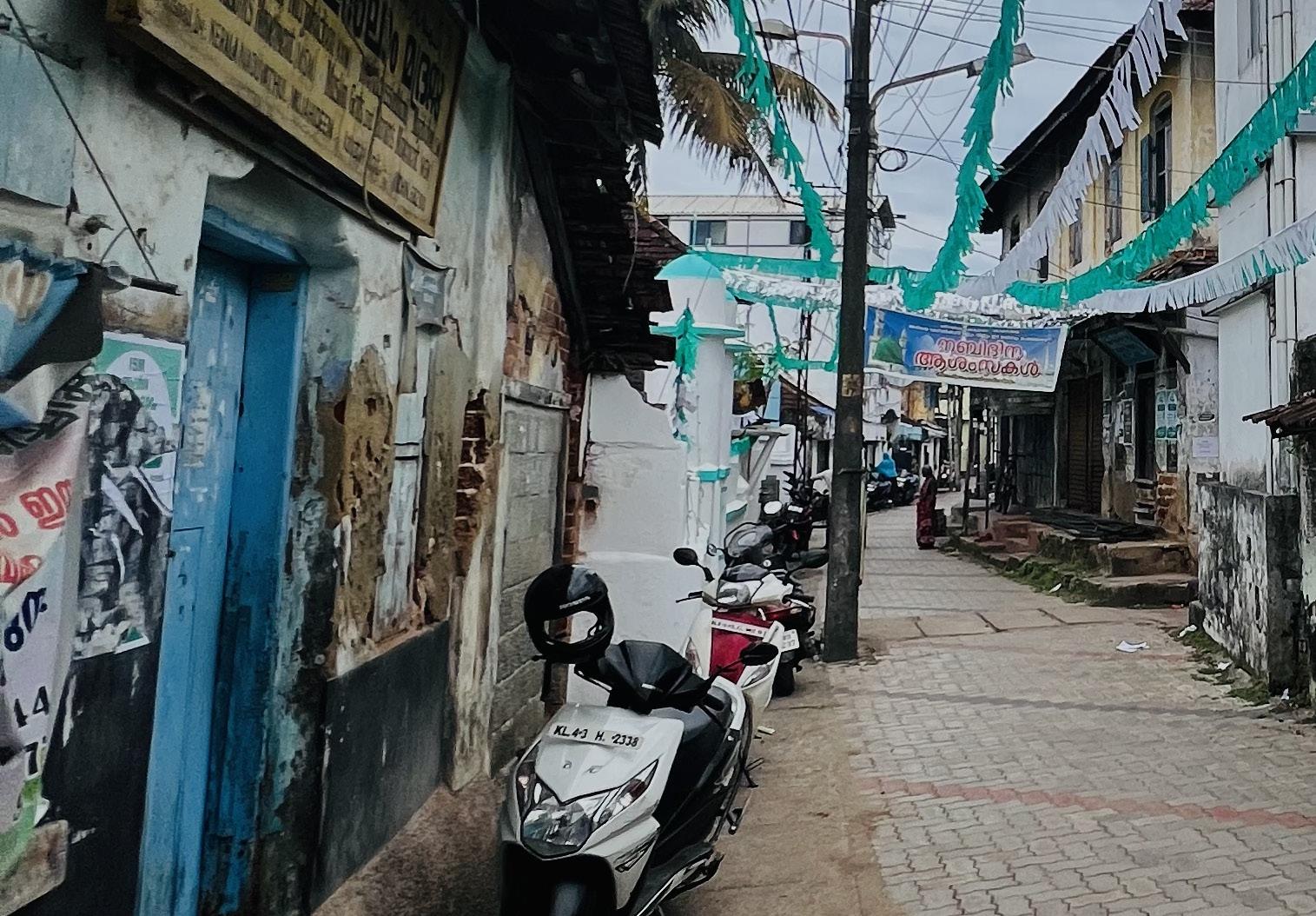
8 | Kunnumpuram,
|
(Re) - Gaining Ecological Futures Kunnumpuram, Fort Kochi, India
Kochi, India
(Re) - Gaining Ecological Futures

9
|
Kunnumpuram, Kochi, India |
(Re)
- Gaining Ecological Futures
Figure 1. 1 The dense streetscape of Kunnumpuram
Contents
Preface
1. Introduction
1.1 Kochi, Kerala, India 1.2 History 1.3 City context 1.4 Site presentation 2. Methods 2.1 Introduction to methods 2.2 Process 2.3 Local knowledge and site research 2.4 Data collection 2.5 The tangible experiences linked with theory 2.6 Challenges located at site 2.7 Participatory workshop 2.8 Stakeholder-issues interrelationship 2.9 Stakeholder meetings 2.10 Chapter endnote
3. Situation analysis 3.1 Introduction 3.2 Public spaces 3.3 Pathways’ walkability issues 3.4 Gender inequalities 3.5 Waste management 3.6 Environmental degradation and canals 3.7 Chapter end note
15 17 18 20 23 26 28 32 34 36 38 40 42 44 46 52 55 56 58 62 36 66 70 72
10 | Kunnumpuram,
| (Re)
Kochi, India
- Gaining Ecological Futures
Contents
4. Spatial Solution
4.1 Vision statement
4.2 Reaching goals and strategies
4.3 Inclusive vibrant public space
4.3.1 Making the pathways more walkable project 4.3.2 Placemaking Project : An inclusive green place for the community 4.3.3 Communal water 4.3.4 Urban community garden 4.4 A segregative waste management system 4.5 Ecological regeneration 4.6 Chapter Endnote
5. Governance
5.1 Urban Governance 5.2 Strategies of governance towards inclusive public space 5.3 Strategies of governance towards cleaning the canal 5.4 Strategies of governance towards sustainable waste management
Reflection Conclusion References and Bibliography List of Figures
76 78 80 82 84 86 88 91 94 96 100 102 104 108 110 112 114 116 118 120
11 | Kunnumpuram,
| (Re) - Gaining Ecological Futures
Kochi, India
Eloïse Redon
I am an exchange student coming from the Architecture School of Bordeaux (ENSAP Bx), in France, and have a bachelor in Architecture. Over the years I became more and more aware of the ecological challenges we are facing. Through architecture and now the UEP program, my hope is to learn and experiment with new approaches and find alternatives that will help me, as a future planner or architect, to act and create projects that have meaning and participate in the creation of a brighter future. I sincerely believe that gathering people and working with the communities around common goals will help us find solutions to go toward social and ecological transition.

Mohammadreza Movahedi
I have a bachelor’s degree in Architecture and a master’s degree in urban design from the National University of Iran, Tehran. After graduation, I worked as a freelance architect for a year; then, I worked as an architect in an architectural firm in Tehran for three years. My delightedness in thinking and reading about city challenges and issues made me decide to come back to university and pursue my interest in urban studies. Urban Ecological Planning (UEP) fitted my interests best since it equipped me with the knowledge to see urban planning worldwide sustainability issues from a different perspective and from a different scale.

12 | Kunnumpuram, Kochi, India | (Re) - Gaining Ecological Futures
Maria Magdalena Mühleisen
I have a bachelor’s in Architecture from Bergen School of Architecture. I worked one year as an intern at Helen & Hard architects in Stavanger, then one year at their office in Oslo as an architect. I am now doing my master in Architecture at NTNU, and am joining the Urban Ecological Planning program for this semester. My interest is in how to find new ways of planning and drawing for the future. Urban Ecological planning is catching my attention in the way it is contributing to the future, with its sensitive holistic understanding of the world, and the apectsof how to deal with real issues on ground where it is needed, and finding relevant solutions.


Nahida Yeasmin
Tonni
I have done my bachelor in Urban and Regional Planning from Rajshahi University of Engineering & Technology, Bangladesh. My thesis was related to “Economic Valuation of Environmental Change of A Natural Wetland” and during my thesis I grew my interest to work further in ecological aspects of planning. That is why I decided to do my Master’s in Urban Ecological Planning in NTNU. I am looking forward to researching more on how planning can improve the living standard of people and make the world livable for future generations.
Figure 1. 2 World map 13 | Kunnumpuram, Kochi, India | (Re) - Gaining Ecological Futures

14 | Project location | Project Title
Figure 1. 3 The Calvathy canal, Kunnumpuram, Fort Kochi
1. Introduction
The city of Kochi and our chosen site Kunnampuram

Figure 1.4 Goats in the street, Kunnumpuram, Fort Kochi


15 |
| (Re) -
Futures
Kunnumpuram, Kochi, India
Gaining Ecological
Kerala in India, state on the Malabar coast Inaugurated 1st november 1956
It is the 21st largest state in India Main language: Malayalam Population: 34.63 million Economy: 9th largest in India Povert in Kerala: 64,006 extremely poor families
Figure 1.5 State of Kerala in India
16 |
Kunnumpuram, Kochi, India | (Re) - Gaining Ecological Futures
1.1 Kochi, Kerala, India

The city
Koch city is a part of the district of Ernakulam, located in the Southeast of India in the state of Kerala. Historically referred to as “Queen of the Arabian Sea” situated between a mountain range the Western Ghats to the east, and the Arabian Sea to the west. Upon the Western Ghats there are wild lands covered with dense forest and deep cut valleys.
Other regions are cultivated as coffee and tea plantations. The coastal belt of Kerala is relatively flat with interconnected canals and rivers running through, crisscrossing the beaches, together with groves of coconut trees. The coastal city has a wet humidmarine tropical climate, influenced by heavy rain seasons brought up by monsoons.
It is the largest city in Kerala with approximately 3.3 million people, while entire Kerala has a population of over 34.6 million people.
The economy of the Kerala district is the 9th largest in India. The states capita per income is in general 60% higher than average, and contributes with 4% to the national GDP. The main industries are shipping, IT, tea, manufacturing, tourism, fishing and retail. The city has a diverse rapid evolving culture with a cosmopolitan outlook, and is a highly educated part of South India, with many famous universities such as Kochi University of Technology. (Roman, Et Al, 2022)
17
|
|
Kunnumpuram, Kochi, India
(Re) - Gaining Ecological Futures
Figure 1. 6 Image from
Kunnumpuram
1.2 History of Kochi
Historically, Kochi was a trading center for centuries. It is strategically located with a close connection to the Arabian Sea. Kochi was an insignificant fishing village until, in the 14th century, the backwaters of the Arabian Sea caused the separation of the village from the mainland, turning it into one of the safest ports on India’s southwestern coast. Arabs and Chinese are believed to have been the firsts to migrate to Kochi trading with spices in the 14th century. ( Britannica encyclopedia)
The year 1498 proved to be a pivotal year in the history of Kochi and India. It was during this year that Vasco du Gama and other Portuguese explorers found their ways to Kochi. Trade and colonization underwent rapid changes as a result. From this point, Kochi experienced numerous rounds of colonization, becoming India’s first European settlement around 1500 and an entry point for further colonial encounters. As it is shown in the historical timeline, Portuguese, Dutch, and British took control of Kochi until India gained its independence in 1947.
When British East India Company defeated the Dutch in 1795 as the last colonizer of Kochi, the city became part of the British Empire. Port city developed rapidly under their rule. For instance, some canals were created in Fort Kochi to separate areas and transportation goods.
In the canals running through the site we have been doing our case study, were built during this time. According to our interviews with the local stakeholders, and community these canals were deeper than they are today. And they were cleaner in previous decades. However, they gradually have gotten polluted, and they lost their functionalities.
For centuries, Kochi has remained an important destination and trading center in Southern India.
As an important port of Kerala, diverse groups of people migrated to Fort Kochi in different times throughout the history. So, Fort Kochi, that the study area is located, is a multicultural zone that includes many communities and religions living together peacefully.
After the Indian Independence, the Government of India’s 1 November 1956 States Reorganisation Act inaugurated a new state: Kerala. On 9 July 1960, the Mattancherry council passed a resolution that was forwarded to the government, requesting the formation of a “Municipal Corporation” by combining the existing municipalities of Fort Kochi, Mattancherry and Ernakulam. Thus, on 1 November 1967, exactly 11 years since the conception of the state of Kerala, the corporation of Cochin came into existence, by the merger of the municipalities of Ernakulam, Mattancherry and Fort Kochi, along with that of the Willingdon Island and four panchayats viz.
18 | Kunnumpuram,
| (Re) -
Kochi, India
Gaining Ecological Futures
Portuguese Rule
Vasco da Gama discoverer of the sea route to India (1498), established the first Portuguese factory (trading station) there in 1502
British Rule
Kochi became part of the British Empire in 1814. Fort Kochi became British Kochi, and in 1866, it became a municipality.
Port city became more developed with the British and the canals were created for the trade purposes and seperate the areas from each other.
Pre-Portuguese era

Arabs were believed to be the firsts to migrate to Kochi for spice trade. Followed by the Chinese. It is believed that Chinese fishing nets were introduced in Kochi by Chinese in this era.
Dutch Rule
Kochi prospered under their rule by shipping spices and copper. It was also ok for native ethnic-religious groups. Under their reign the Jewish identity
Independent India
As one of the main tourist destinations in South India, Kochi remained an influential trading center after India’s independence. it is a multi-cultural city that includes many communities and religions living in harmony and peace. Despite this, the city has a number of issues including environmental degradation.
19 | Kunnumpuram,
India | (Re) - Gaining Ecological Futures
Kochi,
Figure 1.7 The historical timeline of Kochi
1.3 City context
Culture
Kochi is a multicultural city as many people from different parts of the world and from different cultural backgrounds have migrated to Kochi (Kochi Culture, 2013). The city has influenced by all cultures, in each part of the city represents a culture. Kochi has a colonial effect due to rule by the Portuguese, Dutch and British (Raheem, 2013). In the Indian context, the Hindu caste system still exists which divides them into social hierarchical four groups named Brahmins (priests, teachers), Kshatriyas (rulers, warriors), Vaishyas (landowners, merchants), and Sudras (servants), based on their karma (work) and dharma (duty) according to their ancient belief (Tóth, 2019). According to Zsuzsa Tóth, caste discrimination affects people’s daily lives in a terrible way, reducing their access to employment, education, and social standing.
Kochi is a city with a diverse population, including Muslims, Christians, Hindus, and others. Despite the caste system and the religious divisions that exist in India, in Kochi city, a unique communal harmony can be noticed. According to sociologist Ashis Nandy, communal harmony is based on their mutual understanding of differences, not because of secularism (A unique communal harmony in Kochi - The Hindu, 2014).
Politics, governance and corruption
According to the Corruption Perceptions Index, 2021 reported by Transparency International, India is in the 85th position out of 180 countries which indicates the high level of corruption in India. According to the president of V4 Kochi, Pavizham Biju political parties only want to lure people rather than solve their problems which indicates the opacity of the political parties (New fronts in Kochi to battle corruption, inefficiency - The Hindu, 2020).
According to the community politicians are giving the impression that they are truly speaking for the people.
India’s most pressing problem is corruption, which has become pervasive and endemic. Although certain Indian regions are working to increase transparency and community-based efforts, there is not much proof that these measures would actually reduce corruption (Sukhtankar, Vaishnav, and others, 2015).
Economic disparity is a major problem in India since the privileged have managed to seize a large portion of the country’s wealth. Corruption has a significant impact on all developmental projects, which worsens the situation for the underprivileged. While politicians and bureaucrats profit from the corruption in India, low income groups are its primary victims (Murthy, 2010).
20 | Kunnumpuram,
| (Re)
Kochi, India
- Gaining Ecological Futures
Climate and climate change
The climate of Kochi is topical. Due to its geographic location, Kochi experiences some slight temperature variations as well as moderate to high levels of humidity. During the monsoon season, there is significant rainfall in Kochi (Thomas et al., 2014).
Kochi is considered Kerala’s most polluted city and the average PM 10 (particulate matter 10 micrometers or less in diameter) is touching the permissible limit (Nambudiri, 2020). According to pulmonologist Dr. Ramesh Nair, the cases of respiratory disease are getting higher over the years due to the pollution from construction sites, road works effects, etc. The canals of Kochi are facing a high level of e-coli contamination which is beyond the permissible limits (Narayanan, 2021). The presence of chemical contamination is also found in the canal water as well which is directly going to the sea.
In 2018, Kerala experienced the worst flood due to climate change and high pollution in the canals and low-lying wetlands. The network of the canal has been destroyed over the years by improper construction and planning and the pollution has hindered the natural flow of the water toward the sea (Vohra, 2022).
Global warming is affecting Kochi in various ways in the upcoming years including sea level rising, intense tidal flooding, extreme rainfall (Jacob, 2022). The land that is referred to as God’s Own Country will change into a location where people will be terrified to reside due to the rising sea level, heavy rainfall, and high levels of pollution.
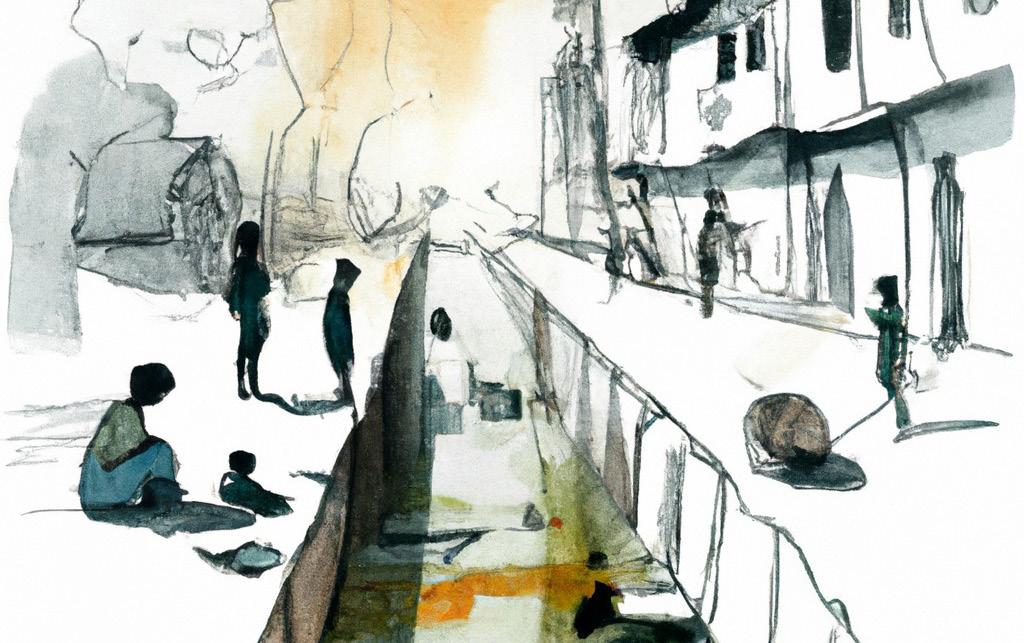
21 | Kunnumpuram,
| (Re) - Gaining Ecological Futures
Kochi, India
Figure 1.8 Sketch representing issues regarding climate change in Kunnumpuram, Kochi
Kunnumpuram Fort Kochi, India

22
|
Kunnumpuram, Kochi, India | (Re) - Gaining Ecological Futures
1.4 Site presentation
Selecting site
Kochi is a dense complex city, an example of one of the Global South cities. The metropolitan area’s population is increasing by over 3% every year (Indiaonlinepage, 2020). Due to the extremely rapid urbanization, it is facing multiple challenges regarding the economy, social aspects, politics, and sustainability.
To choose a site to work within this context, we started by exploring and walking around the city.
We found many interesting places, and after some discussions and research we ended up choosing a livelihood area in Fort Kochi. We knew that we wanted to work on ecological vulnerability, and this site appeared to have both many challenges but also a lot of opportunities regarding those subjects.
Kunnumpuram
Our site is located in Fort Kochi, in a neighborhood called Kunnumpuram, considered as a “slum area” by the city.

As a low-income area, the rate of poverty is high. It is one of the more dense areas of Fort-Kochi, with small and precarious houses that can shelter up to three families. The shifting of the previous market to Ernakulam, in the mainland, resulted in a loss of economic opportunities in the neighborhood. (Raman et al. 2022).
Located in the South-west of India, in Kerala, Kochi (formely known as Cochin) is one of the major cities of the state and is rich of culture and history. During our month of fieldwork, we selected a site to work on and discovered more in depth what the city had to reveal. Figure 1.9 Site area
It is surrounded by two canals : the Kalvathy canal
23 | Kunnumpuram,
| (Re) - Gaining Ecological Futures
Kochi, India
and the Eraveli canal. Both canals were originally built during British colonization and served the dual purpose of dividing areas and as a route for the transportation of goods. The history of the neighborhood still has an impact on the structure of the city, and nowadays, the canals are isolating the area from the rest of the city.

The area has a rich historical context, and is referred to as “Mini India”. Indeed, many cultures and religions are living here among each other, embodying the different faces of India. With the majority of the residents being Muslims, a mosque is located near the canal. Additionally, among the few existing facilities, we can find a community center, a school, and a small meat market.
The area is beautiful, with canals running through it to the ocean. Despite the noticeable challenges, particularly regarding pollution and the need of rehabilitation, we were able to see how much potential the site has to offer. We were convinced from the beginning that some improvements could help to create a very pleasant area with a strong community bond.
24 |
Kunnumpuram, Kochi, India | (Re) - Gaining Ecological Futures
Figure 1.10 Eravali Canal
Figure 1. 11 Typologies at site

25
| Kunnumpuram, Kochi, India | (Re) - Gaining Ecological Futures
Figure 2.1 Participatory workshop, letters from women
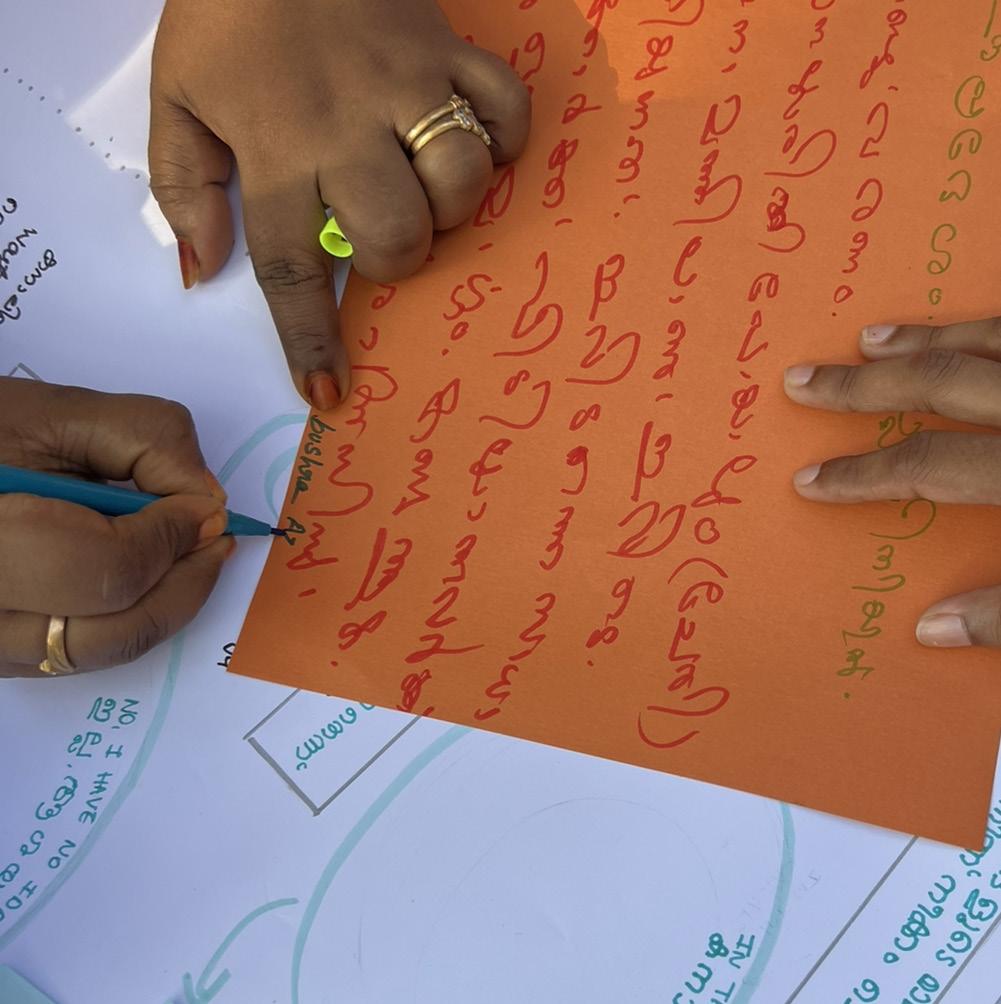
26
| Kunnumpuram, Kochi, India | (Re) - Gaining Ecological Futures
2. Methods & Issues adressed Participatory action research in Kunnampuram


During our Fieldtrip we conducted action research in the local community. This method is based on democratic participation in the process of solving problems located at the site. It follows the logic of Plan - Do - Study - Act. In our project we aimed to be at the highest level of Arnsteins ladder of participation, defined as the degree of citizen power. Local stakeholders together with the community got involved in the project. And new understandings of the area, was turned into local problem-solving and action - research. This chapter goes through our process and methods used when we were conducting our fieldwork.
Figure 2. 2 Participatory workshop
27
| (Re)
|
Kunnumpuram, Kochi, India
- Gaining Ecological Futures
2.1 Introduction to methods
The 21st century is facing increasingly more “wicked problems” propounded by climate change (Vogel, Scott, Culwick & Sutherland, 2016).
As an example of a Global South country, India has been facing plentiful environmental issues, as well as social, economic, and governance ones routed in this country’s improper planning and development issues. Roy (2009) explored this issue, and states that the fast-paced growth in India, particularly in urban areas and cities, has resulted in an urban crisis. The unsuccessful planning strategies of Indian cities have led to inadequate infrastructure and a sharp social division between citizens.
In our project, we want to reflect and act on how we contribute to shaping and nurturing ecological inter-relations with the social spatial environment. We want to critically engage with human-centered planning approaches toward radical transformative planning, discovering new ways of entering the future. This necessitates the use of transdisciplinary and co-production of knowledge approaches to environmental and urban problem-solving (Ibid. 2016).
This research is based on primary, secondary data and the qualitative analysis of direct observation, in-depth interviews and participatory activities with the residents of Kunnumpuram, carried out during October and November 2022. This area-based approach allowed us to record different viewpoints about the ongoing challenges of the neighborhood.
“Participatory Needs Assessment gives the right to speak, to the people living in local communities and, moreover, it attempts to place the problems and solutions submitted by citizens on the working agendas of the public authorities, which acts as decision-makers.” (Sandru, 2014. p.2)
28 | Kunnumpuram,
| (Re) -
Kochi, India
Gaining Ecological Futures
Figure 2.3 Diagram of methods
To conduct our project, we used different methods along the way to assess the needs of the community, understand their challenges and opportunities, and formulate our goals and strategies.
Our overall aim was to develop a bottom-up approach that puts the community at the center of our research.
By using participatory needs assessment methods at the beginning of our project we allowed the community to reflect on their issues. (PNA) gives the opportunity for people to reflect and gain a sense of empowerment (Sandru, 2014). “PNA is truly the most certain way to find the perception of the community members on their collective needs.” and therefore find adapted solutions, stands the author. Step by step we gathered qualitative information and met a lot of people with different visions
29 | Kunnumpuram, Kochi, India | (Re) - Gaining Ecological Futures
for the area. We built our method from the lectures we got, the theories we studied, and by experimenting and adjusting on-site. The guide written by UN-Habitat (UN-Habitat, 2020) gave us a frame of work and inspired us to set up some participatory activities.
We started with an area-based approach and street interviews to understand the view of the community. By coming multiple times, explaining the purpose of our work and being present and willing to listen, we built some level of trust with the community. And as we collected more data, we developed other methods to take our project one step forward.
Like a gear, our method process is a mechanism where the first action activates the next one and everything works together (Figure 2.3). It is not a linear process but a big system that turns simultaneously. Therefore, from an area-based approach with a lot of observation and street interviews, we moved to meetings with stakeholders, conducted semi-structured interviews, organized a participatory workshop, created visuals, brainstormed on the socio and spatial solutions that can be implemented, and asked for reviews from the community. Through the process, we went back and forth between interviewing stakeholders, interacting with the community and reflecting as a group (Figure 2.4).
Overall, we involved the community every step of the way to give them a sense of ownership and conduct a project that is local-specific and rational.
30 | Kunnumpuram,
Kochi, India | (Re) - Gaining Ecological Futures
Figure 2.4 Organization of project work in Kochi - reflectivity and adaptation

31
|
Kunnumpuram, Kochi, India | (Re) - Gaining Ecological Futures
Figure 2.5 Fieldwork overview of the process
2.2 Process
Walking and observing
As one of the first steps of our work we walked around in the neighborhood and observed to get a better understanding of the area
Meeting with K.J. Sohan
Semi-conducted interview with the former mayor of Kochi who helped us understand the current situation and challenges in the city

Picture with Aïsha’s family that helped us a lot. Walk to present the neighborhood, the challenges and getting insights from Gilbert

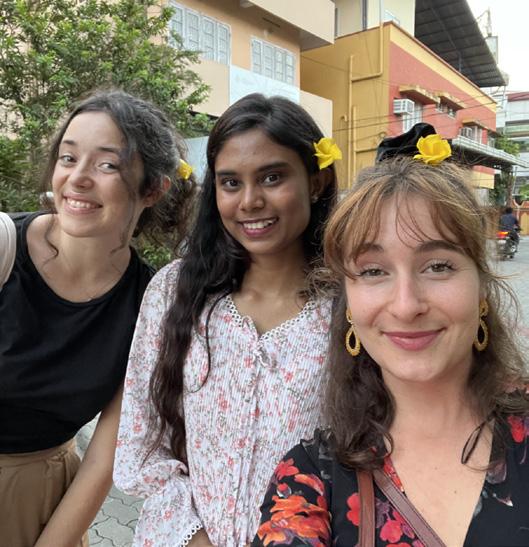
Participatory workshop
Street interviews around the area
Conference about urban sustainability
Discussing with the women of the neighborhood and drawing with children to understand their views

Exchanging with different groups of people. We got invited to play Carom with some men and discussed about the neighborhood

A conference organized by the city of Kochi in partnership with the E.U. to understand the decision-makers’ points of views. And met students from Kochi
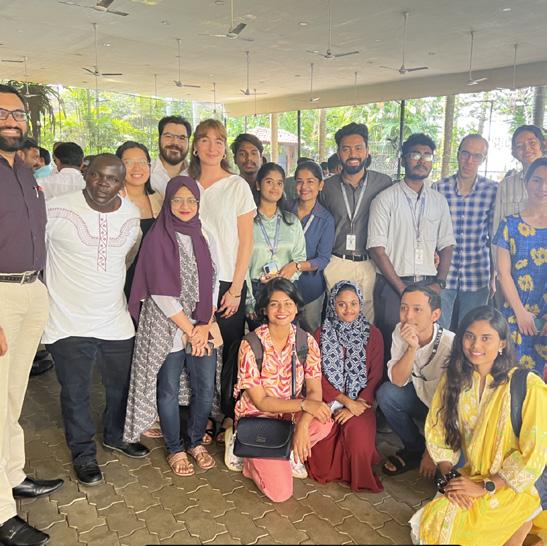
32 | Project location | Project Title
Transect walk with Gilbert
Introducing the SPA students to Kunnumpuram
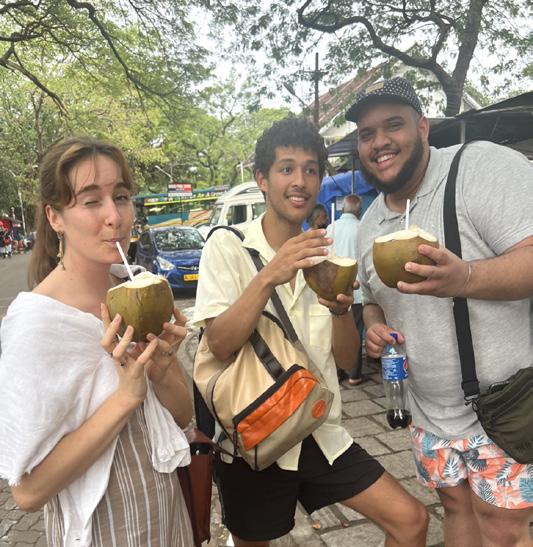

Presenting our work and the neighborhood to Seth and Aidan that joined our group and gave us a lot of insights during 10 days
Dinner with the translators
Discussing and getting to know the Kochi students that helped us to translate our interviews

Brainstorming about the spatial solutions
Through our process of reflections we used a lot of sticky-notes to write down and organize our ideas
Reflections
between groups
Issues analysis and opportunities identification with group 4 who is working in the same area as us
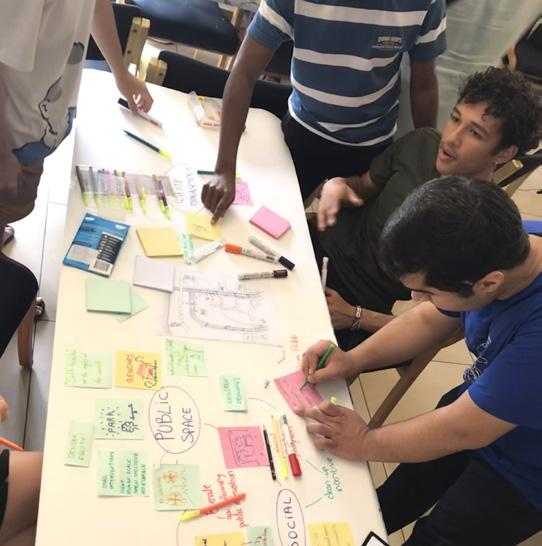

Final exhibition in Kochi
A fulfilling day where we got the opportunity to expose all the work done and get fruitful insights and reviews
Final presentation poster printing

Seeing the result of our work and preparing for the final presentation before finishing the report
Figure 2.6 Picture collage of process 33 | Project location | Project Title
2.3 Local knowledge and site research
We were doing transect walks and participatory mapping in Kunnumpuram Fort Kochi where we chose to locate our site. We were going together as a group, walking around in the community, and we tried to identify environmental and social resources in the area.
We did interviews with by-passers and got an understanding of the social issues, resources, and conditions. The characteristics of the place were very clear to us, with extremely polluted canals running through the area, together with a lot of trash laying around. Very dense streets, and lack of public space.
The place had its beauty, with lush old rainwater trees, coconut trees, and other lush greenery, there were and many different birds, insects and even turtles in the canals. The streets were filled with goats, and chicken.
The people were very warm and interesting to share thoughts with us, their life and reality. And we are so thankful for what they have contributed and shared with us, to make us able to do this project together with them.
Figure 2. 7 Our site in Fort Kochi
 -Maria
-Maria
“We repeatedly did transect walks during our stay, this brought us very close to the community and its reality”
34 | Project location | Project Title
Woman in front of her home
Urban reality in Kunnumpuram Fort Kochi, woman sitting outside her door. With the lack of public space, the entrance serves as a multifunctional space for resting, and participating in the outdoor streetscape.

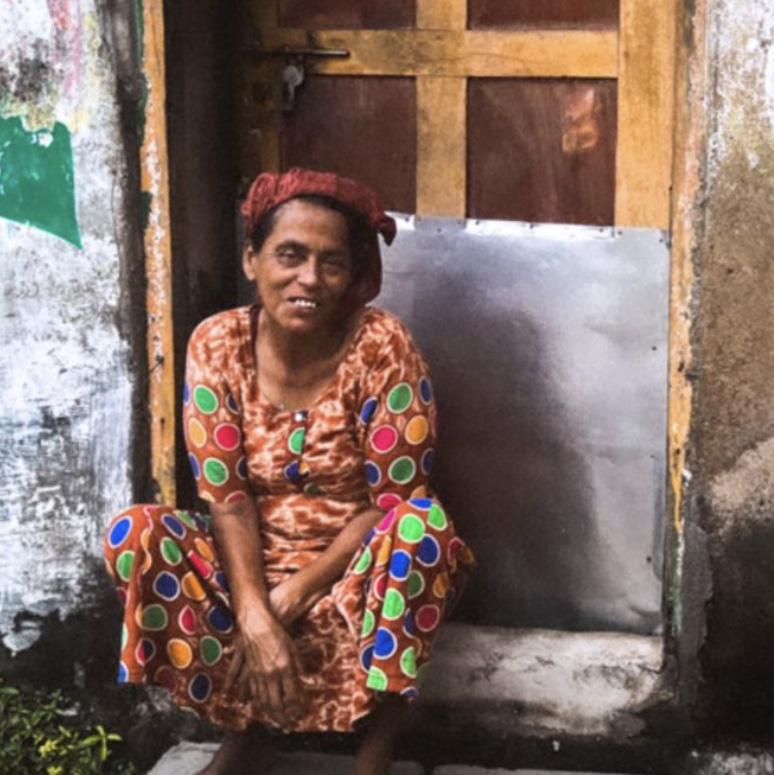
Goat
Local people are informally managing goats as livestock in the streets. A local resource for food.
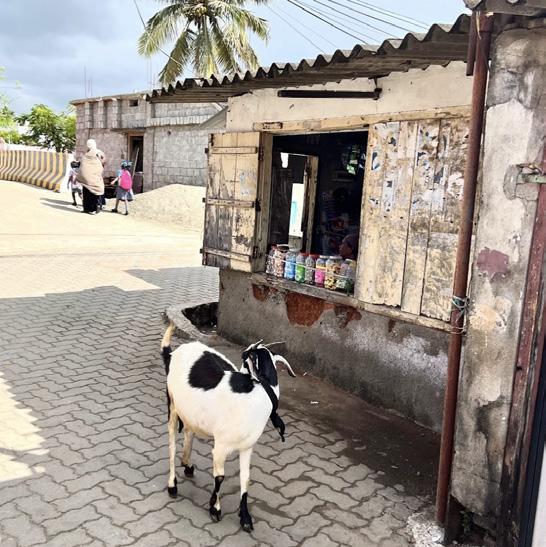
Narrow Streets
The only sense of Urban Public space that exists in Kunnumpuram is the narrow streets, without pederstrianfriendly pathwats. No transition between road and doorsteps.
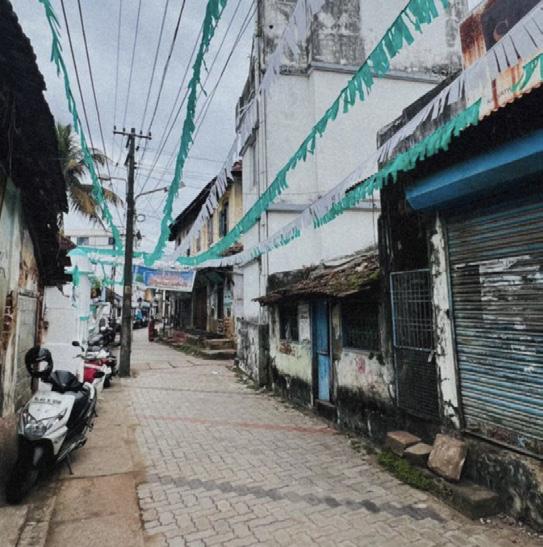
Small scale interaction
Informal sitting arrangement in the street providing small scale interactions.
Vendors
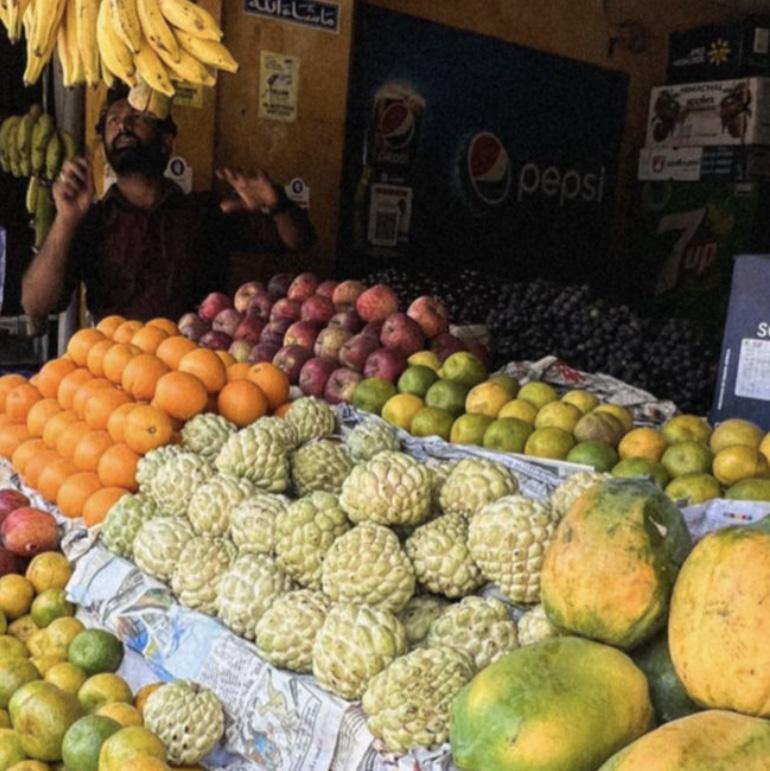
Street vendors sell small fish affordable to the locals in the area.

Fruit shop Local fruit shop, not directly located at site.
Figure 2.8 Images of situations at site
35
| Project location | Project Title
2.


36
| Kunnumpuram, Kochi, India | (Re) - Gaining Ecological Futures
Figure
9 Indian woman and the letter she wrote during the participatory workshop.
2.4 Data Collection
In our participatory processes doing interviews was a way of collecting data where our overall goal was to identify the desire for change in the community. In order to make a planning project, with relevance for opportunities and solutions benefitting the area, we were seeing it as an important aspect to understand the true issues on the ground. As mentioned we had initial collaborations with community members we met, and started to build trust with them. Together we collaborated on researching their interests, and issues. This was a cyclic way of working, where our first participatory sessions informed us about how the next sessions would be making more sense to us, the project, and the community.
Participatory processes made a unique insight into how life in the community was structured. It showed how women were responsible for the house, starting the day by collecting water for the family”
The tangible experience of public space linked to theory
As it has been shown before, in our Anthropocene epoch, nature is seen as a ‘resource’ to serve the human species. Therefore, the degradation of the environment has a direct impact on the construction of public spaces. And those public spaces, mostly shaped by male planners and designers, “created urban spaces that catered to their needs, while reflecting and perpetuating the patriarchal gender norms of their society.” stands Terraza (Terraza et al. 2020, p.26) and became the spatial product and representation of the patriarchal society. Hence, the women and minority groups are “left feeling that they do not belong in the public realm : that the space is not theirs” (Ibid, p.26). These gender gaps are directly visible and suggest a differentiated perception of the environment. First of all, women are more threatened by climate change than men. Through economic pressure and social norms, they struggle to make their voices heard and don’t have the same rights as men. “Women, girls, and sexual and gender minorities are more susceptible to climate risk due to poverty and lower socioeconomic status, especially in informal areas.” (Ibid, p.43) Public places have been developing as notably masculine terrain. In the Indian context, women have a fear of crime; this has been identified as one of the primary drivers behind the masculinization of public space, which manifests as real, tangible, and physical environments to which women have less access. One other primary factor contributing to Indian women’s absence from public spaces is their common experience of sexual intimidation and their fear of being viewed negatively (Paul, 2011). Ecofeminists has profoundly expounded that the root of ecological crisis is closely related to patriarchal culture (Rao, 2012).
37 | Kunnumpuram, Kochi, India | (Re) - Gaining Ecological Futures
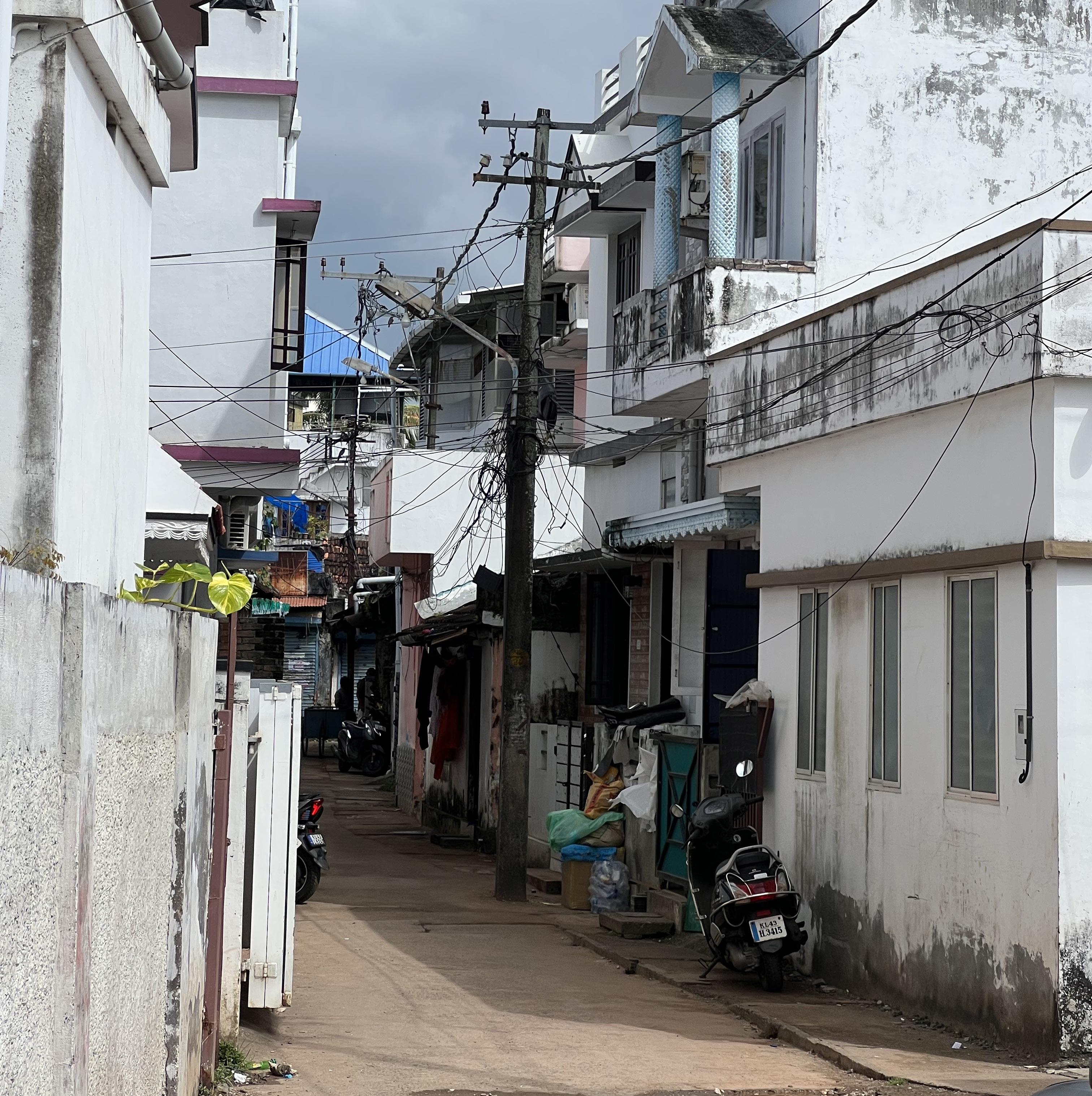
38
| Kunnumpuram, Kochi, India | (Re) - Gaining Ecological Futures
Figure 2. I0 A view of a street at site
2.5 The tangible experiences linked with theory
More than half of the world’s population is urbanized, and the major part is living in the global south. Urbanization, rapid population growth, lack of infrastructure, climate change, and resource depletion are some of the issues leading many cities into crisis.

Public space is defined as open places that are owned by the public and fosters to create communal bonds and cultural richness in a society. Public space provides freedom of expression and conveys the image of the city.
UN-Habitat among others views urban planning as a part of the problem. The faulty planning systems of many cities in the world are creating spatial and social exclusion. Many urban plans are antipoor, without any level of engagement towards climate change and social, economic, and environmental sustainability. Leaving people in poverty, even more, fragile and unsupported. (Watson, 2009)
The pathways, streets, gardens, parks, open spaces, public buildings, and other areas can all be considered public space, but it needs to be made accessible to everyone. Due to rapid urbanization the there is a lack of open public space in the Global South. Here spaces are vulnerable due to urban heat, flooding, and other climate change related issues. (Hatuka and Saaroni, 2013).
39 | Kunnumpuram,
Kochi, India
| (Re) - Gaining Ecological Futures Figure 2. 11 Fish vendor
2.6 Challenges located at site

Public Space
During the participatory workshops the main issue the community focused on was public space. All the issues address in our project are linked to the use and experience of the public sphere. The degradation of the canal is affecting the entire area with its bad smell flooding, and polluted appearance. Waste is lying everywhere, creating unpleasant environments, and endangering nature and humans. High pollution of ear soil and water creates a health risk to humans, animals, and insects. The disturbed natural environment is out of balance because of high density, and no greenery. Native species are threatened or extinct. Due to a patriarchal society women feel excluded from public spaces, and they face higher levels of danger related to climate, abuse, and violence when participating in the public landscape. The high density in the streets is a threat to the community, there are not many open sightlines, and there is a lack of eyes on the street to ensure safety. The infrastructure and lack of streetlights are also creating a threat. Climate change with more extreme weather effects the conditions of the neighborhood, and the unpredictable future also makes it difficult for people living here to plan for their life. Accessibility and inclusive pathways for women, children, men, elders, and people with disabilities are nonexistent.
Canals, an important natural asset of the area, due to pollution they have degraded and put the lives of citizens at risk. Sadly, they act as a drainage systems for sewage and waste. Due to the large amount of trash they are stagnant and suffer from an extreme odor.

Gender


Because of cultural norms and a patriarchal society, women were suffering the most. With no appropriate public space in the area, making even stronger gender inequality. In this area men are were routinely being prioritised over women and children.

40 | Project location | Project Title
1 - 2 - 3 - 4 - 5 - 6 - 7 2 1 5 Canal
The area has a dysfunctional waste management system which results in a lot of issues, the segregation of waste is not sufficient and only separates solid and biodegradable waste. Due to this people are practicing opening burning and waste goes into the canals and the ocean. Waste is also lying around everywhere in the streets.
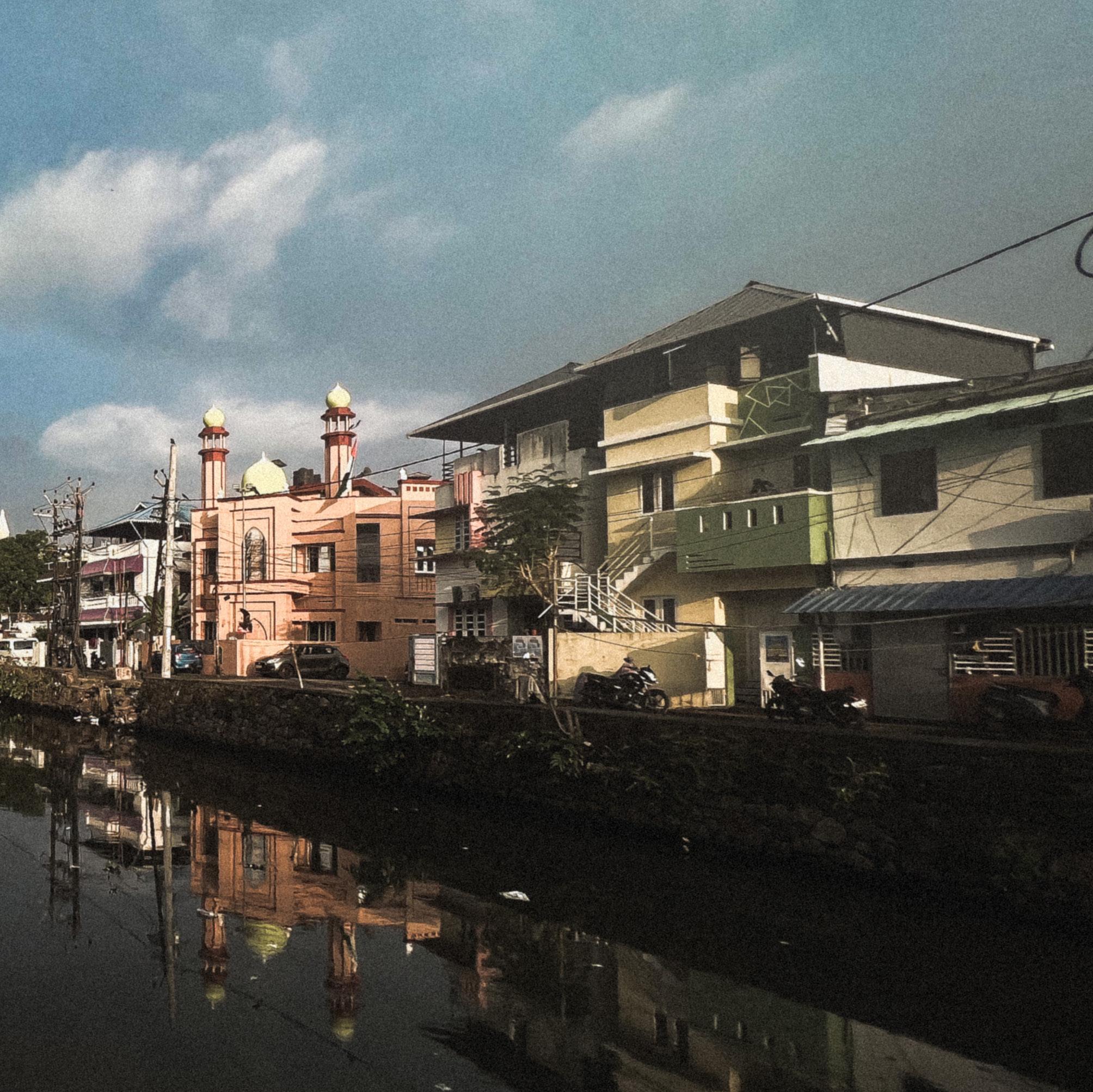
4





Ecology
Waste Safety Pathways
The high level of pollution and the very dense streets together with climate change is threatening the local biodiversity and the native species. The degraded green ecology in the area makes the social-ecological aspects suffer.
According to people living in Kunnumupuram, drug addicts were a threat. Children and women did not feel safe outside at night. Many women expressed how they were afraid of rumors when being outside. They did not feel like the public ground was an area where they could participate equally with men. The lack of street lights and dense streets with traffic made a huge threat to people, especially children.
This area is characterized by high density and few resources, resulting in narrow streets, unsafe conditions, and limited security. The lack of pedestrian-friendly pathways makes it especially dangerous for children and women.
41 | Project location | Project Title Figure 2. 12 Kunnumpuram
6 7
3
2.7 Participatory workshop - Young people’s views

During the participatory workshop, our focus was on the views and perceptions of the women and children of the neighborhood. While women were discussing specific topics with the help of pens and posters we prepared, we also brought some large sheets of paper, pastels, and colored markers for the young people to express themselves . As we were expecting the language barrier to be more apparent with them, our strategy was to use visuals as a means of communication. Luckily some of them knew some English and helped us a little. The young people, from 4 to 14 years-old, were free to draw whatever they wanted. However, we tried to encourage them to draw what they like, their neighborhood, and how they see the future.
It resulted in many colorful drawings of their houses, the canal, nature, and even the earth, showing that they are aware of climate change. For them, the main issues were the pollution and the lack of space to play outside. We learned that boys are authorized to play outside but girls are mainly staying inside, gathering in groups in a house, under the responsibility of one parent. Showing that gender inequalities are visible from a very young age. Some kids also expressed their concerns about their futures and were already picturing themselves studying abroad later, in countries with more opportunities for them. It was a very fulfilling workshop. We learned a lot from the children and were impressed by their liveliness at such a young age.
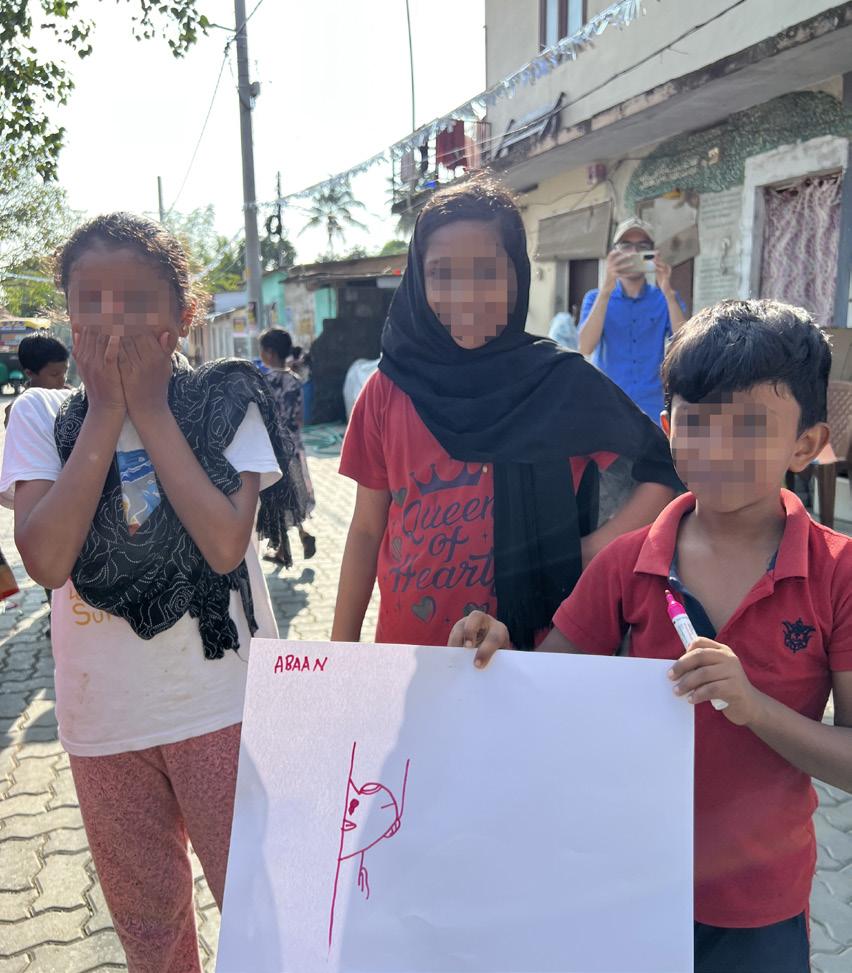
42
|
Kunnumpuram, Kochi, India | (Re) - Gaining Ecological Futures
Figure 2. 14 Youth with their drawings
Figure 2. 13 Picture with the youth from the workshop
Figure 2.15 Drawings from the youth

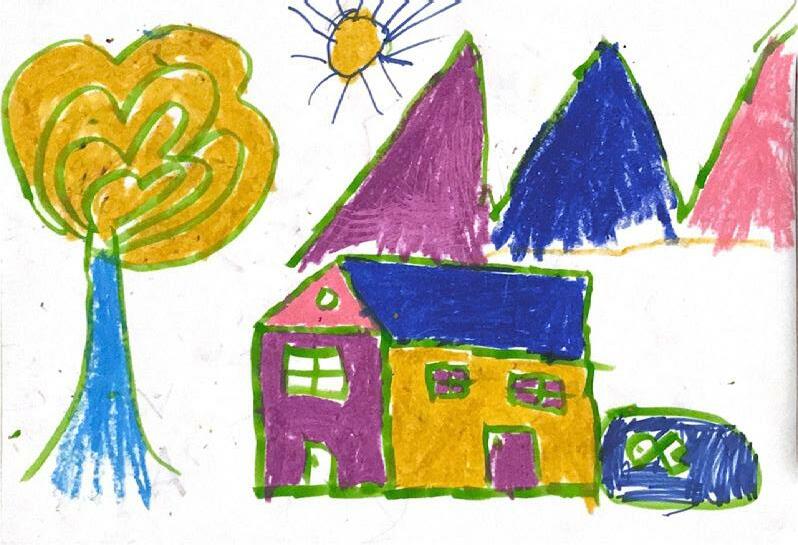
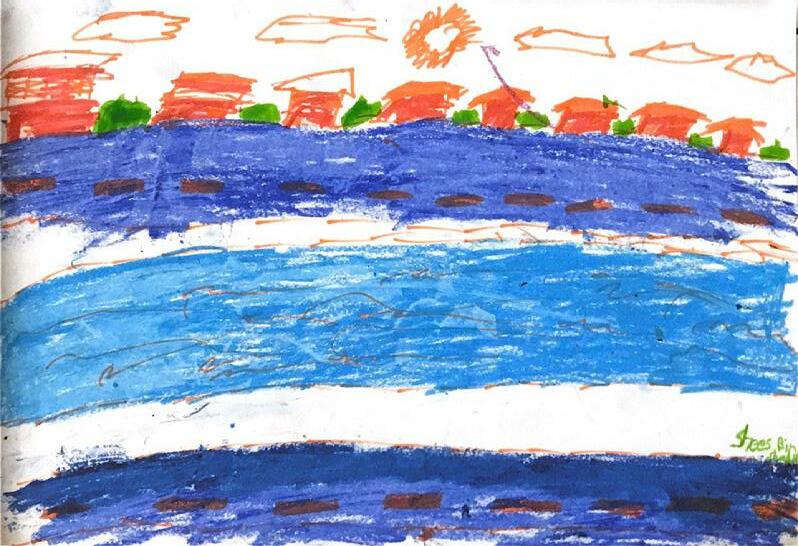



43 |
| (Re)
Futures
Kunnumpuram, Kochi, India
- Gaining Ecological
2.8 Stakeholder-issues interrelationship
Any group or person that has the potential to have an impact on or is impacted by a policy, project, or organization is referred to as a stakeholder (Friedman and Miles, 2006). In the Kunnumpuram area, the waste management, public space and environmental degradation are the main issues which is impacting the inhabitants directly. The several government and private organization shown in figure Figure 2. 16 are the stakeholders managing the Kunnumpuram area.
The GIZ- German development agency and Municipality are the key stakeholders involved in putting policies into place and running the waste collection system. The GIZ and the municipality both have control over the waste collectors because they are an integral part of the municipality. Improper waste collection and open sewage pipelines that lead directly to the canal is a large issue.
CSML-Cochin Smart Mission Limited is in response of taking care of the public space in the area. People have only religious institutions as their meeting places. Those who suffer from inadequate public space are mostly the women and children. They occasionally meet at Kudumbashree office (Poverty eradication and women empowerment program), and the lack of effective planning from the municipality and CSML directly affects the people. The locals don’t feel like they belong there or are connected to other regions of the city.
The area is highly polluted, and none of the stakeholders are at all concerned about the ecology there. The degraded biodiversity and the polluted canal have a significant impact on the neighborhood. Stakeholders like C-HED (Centre for Heritage, Environment and Development) and WRI (World Resources Institute) are not actively involved in the modifications being implemented there.
44 | Kunnumpuram, Kochi, India | (Re) - Gaining Ecological Futures
Figure 2. 16 Stakeholder diagram
45 | Kunnumpuram,
| (Re) -
Futures
Kochi, India
Gaining Ecological
2.9 Stakeholder meetings
The study team meets with various stakeholders to discuss the problems and future action planning. The most important project milestones are the meetings with stakeholders since they aid in understanding the project’s organizational components and gaps.
The former mayor- K.J. Sohan
K.J. Sohan is a former city Mayor and Fort Kochi Veli councilor. He gave crucial details regarding the Kunnumpuram region. According to K.J. Sohan, “The only open space in the Kunnumpuram region is now occupied by the Rajiv Awas Yojana project, and under the pretense of slum rehabilitation the area is becoming extremely densified. In the long run, the initiative won’t either improve people’s quality of life or offer a remedy to environmental damage. Relocating individuals to the outskirts of the city is preferable to moving them to a densely populated building. Additionally, it takes up the only open public space in the area, further suffocating the neighborhood.” (Figure 2.9)
The ward councilor, T.K. Ashraf
According to the councilor for the Kunnumpuram neighborhood, by eliminating the direct pipelines from the canal and attempting to create a functional sewerage system, CSML will expand its pilot project to the area in 2023. The funding will come from the central government, and it will be connected to the sea-based treatment plant. The councilor regarded the Slum Rehabilitation as a project that was successful in giving the homeless people a place to call home. Additionally, he added that CSML was working on a project to install fencing along the canal to stop people from tossing trash into it. (Figure 2.10)
GIZ, Representative
The GIZ representative and the research team met to discuss the waste management system. There was no doubt about the organization’s prejudice and lack of accountability. They accuse the populace of failing to maintain an effective trash disposal system. It is obvious how far apart the organization is from the local community. The GIZ struggles with adequate planning and tries to implement policies that will not benefit society. One startling claim was that they believed building a barrier along the canal would prevent people from dumping trash into it and that the garbage would automatically be cleaned by the ocean’s turbulence.
46 | Kunnumpuram,
Kochi, India | (Re) - Gaining Ecological Futures Meeting with GIZ, Representatives

 Figure 2. 18 Meeting with the ward councilor, T.K. Ashraf
Figure 2. 17 Meeting with the former Mayor- K.J. Sohan
Figure 2. 18 Meeting with the ward councilor, T.K. Ashraf
Figure 2. 17 Meeting with the former Mayor- K.J. Sohan
The images shown in Figure 2.19 are from one of our Participatory Sessions, where our main focus was to include women and youth, two vulnerable groups in the Indian context. Beforehand we made different maps both social and geographical kinds. We also made questionnaires in Malayalam language and papers with symbols combined with text.
We brought a lot of different papers and colors to the workshop for people to feel free to visually express themselves and their thoughts.
We had a very free and radical approach where everyone was encouraged to write letters to us, talk or draw on the premade documents. We organized two groups, one with youths. They freely drew all the things they felt like. The other group was women and mothers, both old and young.
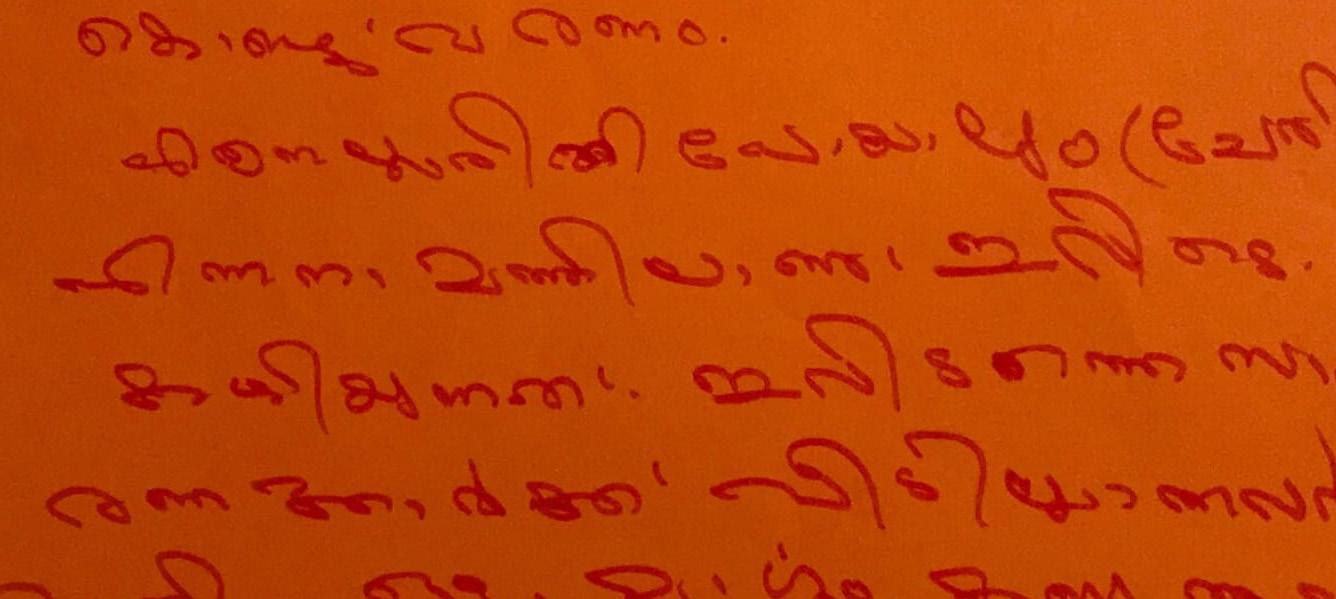
They gave us incredibly valuable knowledge about their experiences with the polluted canal, the insufficient water infrastructure, and the lack of resources in the neighborhood.
They told us about gender-related issues regarding public space, and how only boys played outside. We got to know that they spent most of the day inside, and how they were in response of all household activities. They told us about their life, and how they experiences their community. At
Figure 2.19: Images of participatory workshop
48 | Kunnumpuram,
| (Re) -
Kochi, India
Gaining Ecological Futures
The former mayor- K.J. Sohan

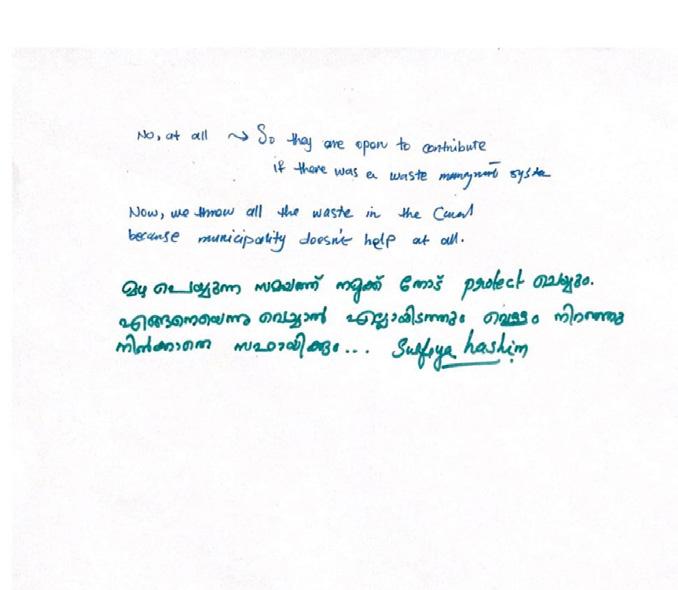


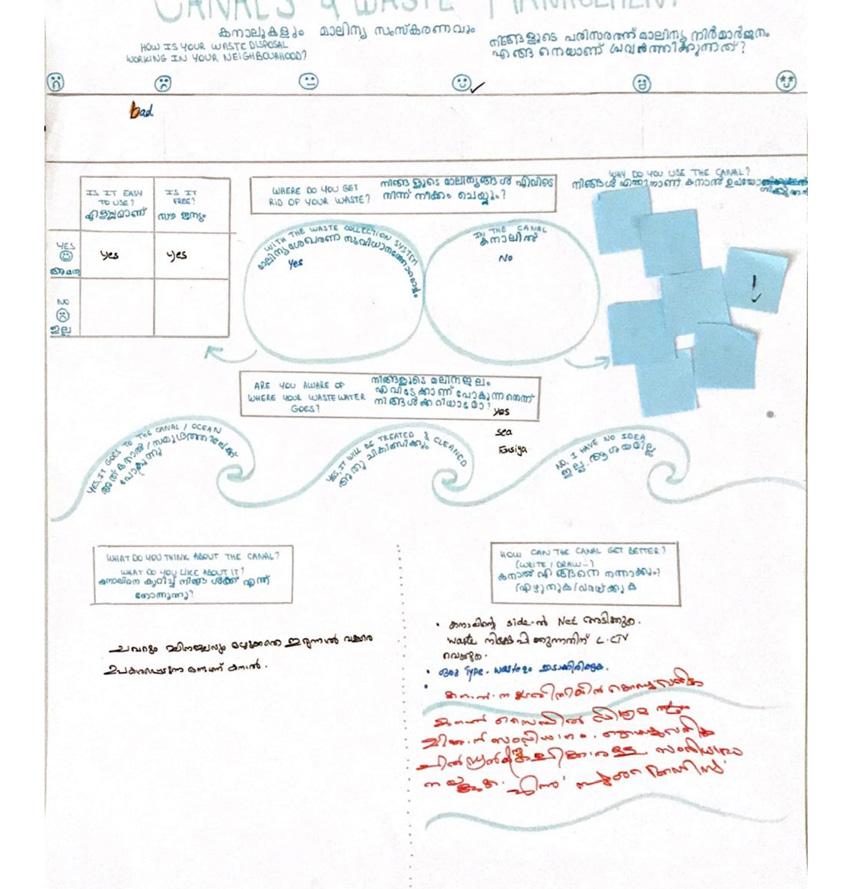

 49 | Kunnumpuram, Kochi, India | (Re) - Gaining Ecological Futures
49 | Kunnumpuram, Kochi, India | (Re) - Gaining Ecological Futures
Due to the interplay between the social, political, ecological, and economic aspects of everyday urban life and anthropogenic climate change, Kunnumpuram faces numerous challenges. There are a number of environmental issues and high health risks in the area as a result of extreme levels of water, soil, and air pollution combined with flooding, extreme heat, heavy rain.
Environmentally related challenges
Canals, an important natural asset of the area, have degraded and put the lives of the citizens at risk. Sadly, they act as drainage systems for sewage and waste. Due to the large amount of trash and being stagnant, they suffer from an extreme odor, and serve as a serve as a breading habitat for mosquitos.
The other issue in the area is about the waste management. This system is insufficient, as well as being too costly to be afforded by the poorest people within the community. The area also faces climate change-related problems. In particular, sea level rise, extreme rainfall events and intense tidal flooding are among them.
Globally, sea levels have been rising at an increasing rate because of accelerated ocean warming and the thawing of Arctic glaciers. In the coming decades, large swathes of low-lying areas will be submerged by sea level rise due to the reports of the Intergovernmental Panel on Climate Change [IPCC]. As a result of global climate change, IPCC predicts that tropical tidal flooding will become more severe. Kochi-Vembanadu could be experiencing such a phenomenon already, aggravated by changing rainfall patterns because of the climate change.
Kunnumpuram, Kochi, India | (Re) - Gaining Ecological Futures
Public spaces related challenges
Kunnumpuram is characterized by high density and few resources, resulting in narrow streets ( see figure 2.6) , unsafe conditions, and limited security. The lack of pedestrian-friendly pathways makes it particularly dangerous for children and women. Because of cultural norms and a patriarchal society, there is no appropriate public space in the area, resulting in gender inequality, especially for women. The area of the case study is regularly dominated by men over women and children.
Governance related challenges
There has been a lack of proper governance in the community. People, power holders, and responsible agencies rarely collaborate. As a result, citizens feel abandoned and the official sector fails to communicate effectively with them. Lack of political will and limited resources make it difficult for the community to solve its own problems.
Residents of Kunnumpuram are often unable to meet their basic needs. There is a limited water supply in the community, as water is only provided twice a day. It is an unclean and insecure source of water.
Interviews indicate that citizens need to be more involved in decision-making processes. It is their belief that the government does not adequately address their needs, nor does it act to turn city plans into action in order to address their problems. There is a lack of trust between citizens and government on both sides, as the mayor and municipality view the people as “sensitive” and unwilling to accept change. People see the government as careless and incapable of helping. Having to wait for top-down decisions is a big challenge for them.
50 |
Figure 2.20 Issues at site




There are various issues associated with the Kunnumpuram. The canals smell, and they are highly polluted because of the improper waste management system. There is a lack of sanitation. The streets are narrow with little greeneries, and the neighborhood suffers from a lack of inclusive public space.


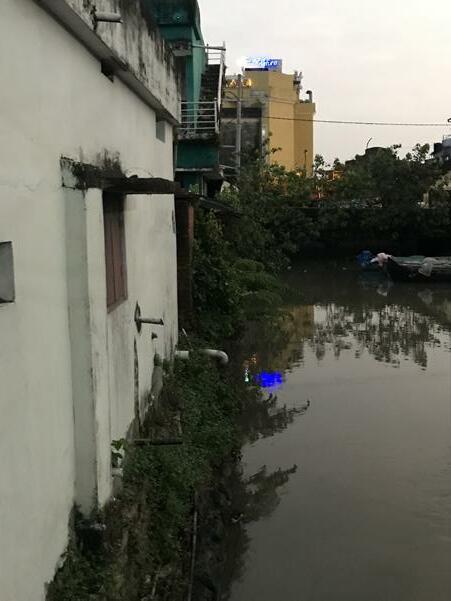





51 | Kunnumpuram, Kochi, India | (Re) - Gaining Ecological Futures GSEd ca ona Ve s on
2.10 Chapter Endnote
During a month of research. We were walking, observing, talking, doing participatory action research events and engaging with people on the ground. We were invited into people’s homes many times. We played games with the locals, trying to understand their everyday lives. So, we achieved to make a close relationship with the community.
We were engaging with a various range of stakeholders, like the former mayor, the word counselor, the main governing structure of public space CSML, and others. We met many different views and opinions, and through the eyes of the people on the ground we have tried to build a project, serving their interests and their needs.
On a small scale our project is the image of a future we hope for in Kunnumpuram.
we used a variety of different methods in order to understand the character and the identity of the area from the viewpoint of the different disciplines. By using each method, a new range of data unraveled for us. Although time-consuming, participatory methods that we were using were interesting for us, and they let different groups of people including women and children engage more in our data collection process. Based on our data collected, we tried to plan the future with respect to nature-culture interactions, and human non-human space collaborations promoting people’s well being. Besides, the public inclusive space that fulfills the needs of different groups of people was a crucial goal for us. In our view, these spaces should be open and multifunctional that entails different programs to co-exist. They are inviting users from different groups, including women, children, men, elderly, disabled to share experiences, express themselves and be empowered to fully live in equity and equality.
52 | Kunnumpuram, Kochi, India | (Re) - Gaining Ecological Futures
Figure 2.21 Workshop at site

53
| Kunnumpuram, Kochi, India | (Re) - Gaining Ecological Futures
Figure 3. 1 The Calvathy canal in Kunnumpuram


3. Situation analysis
Conducted research in Kunnumpuram
Introduction to our conducted research in Kunnumpuram, Fort Kochi, India. In a community facing many issues and opportunities, we were engaging with the local community and stakeholders to understand the context, and its potential for the future. We clearly saw how polluted streets, sea and canals were impacting the life of people and their use of public space, especially women who already were vulnerable and in lack of resources. There were almost no open public space in the area. Women were oppressed by the patriarchic society, in their use of public space and the neighborhood differed from men, who could move around freely. The high levels of pollution and lack of open inclusive public space were also affecting women, children, the elders and people with disabilities. The community had a strong social bond between them, which was an important resourse. Stakeholders and the community have informed our project. This chapter goes through a situation analysis based on our findings.

55 |
| (Re) -
Futures
Kunnumpuram, Kochi, India
Gaining Ecological
3.1 Introduction
The purpose of this chapter is to analyze the current situation based on our findings from our participatory approach. Kunnumpuram is getting affected by a series of environmental, social, economic, and governance issues that have been negatively affecting residents’ livelihoods in the area. The lives of citizens have been subjected to several risks that were illustrated in one diagram. The Figure 3.2 provided us with an overview of the site’s possible risks. And here, by using the term “risk”, we mean “disaster risk” based on UNDRR terminology definition: “The potential loss of life, injury, or destroyed or damaged assets which could occur to a system, society or community in a specific period of time, determined probabilistically as a function of hazard, exposure, vulnerability and capacity.”
After clustering the risks that our site is suffering from, we explained these issues in our content which is organized in three different sections: public space issues, canal and environmental issues, and waste management issues.
As the role of the canals as a risk the health of the residents is bold, we believe that understanding the ecological features of the site is the key in our situational analysis. From the environmental point of view, the area has been suffering from degradations based on its ecological vulnerability from one hand, and the climate change-related issues from the other. Flooding, improper waste management, and biodiversity-loss due to the extreme water and soil pollution are some of the examples of this ongoing environmental degradation.
From the social point of view, people are also struggling with many different challenges because the basic needs of the residents of Kunnumpuram are not met. Poor infrastructure, insecure access to clean water, and improper waste management are some of them.
56 | Kunnumpuram, Kochi, India | (Re) - Gaining Ecological Futures
Figure 3.2 Risk diagram

57 | Kunnumpuram,
| (Re) - Gaining Ecological Futures
Kochi, India
3.2 Public spaces
Poor urban conditions
Based on our community mapping, participatory workshops, transect walks and engagement with various stakeholders, we got to understand how Kunnumpuram is facing a lack of resources on many levels, and how public space is such an important aspect of their marginalized conditions.
Urban public space has become much denser and more polluted in the last decades. The streets are very narrow, and no planned public space is left open. The community has a large population growth and no place to physically expand. As we got to know, in some places up to four families are living together in one house. Many can not afford to buy their own place therefore rent their entire life. This makes a feeling of less responsibility among the citizens to maintain their houses. Many also completely lack the resources to do so. The landowners do not seem to care much about keeping the houses to a certain standard.
In the area, people do not feel very connected to the streetscape, and lack of ownership together with overburdened lives, makes it seem like they ignore their streets.
As we got to understand, on an individual level, the residents do not see any benefit from using resources on the public environment, which makes a lot of sense because here people are working hard to meet their basic needs of survival.
Previously the area used to have one open public space, where they played sports, and gathered. The municipality took over this green public place and is now developing the area to serve as a site for a new highrise building. This real estate development has not just limited the communitys access to public space but removed the only place they had. This results in even more social exclusion in the area, where the most vulnerable grups, women and children, elders and dissabled are the ones having to deal with the worst consequences. Now they have nowhere to go, and spent their time inside their small houses, viewing the streets as a threath and obstacle.
58 | Kunnumpuram, Kochi, India | (Re) - Gaining Ecological Futures
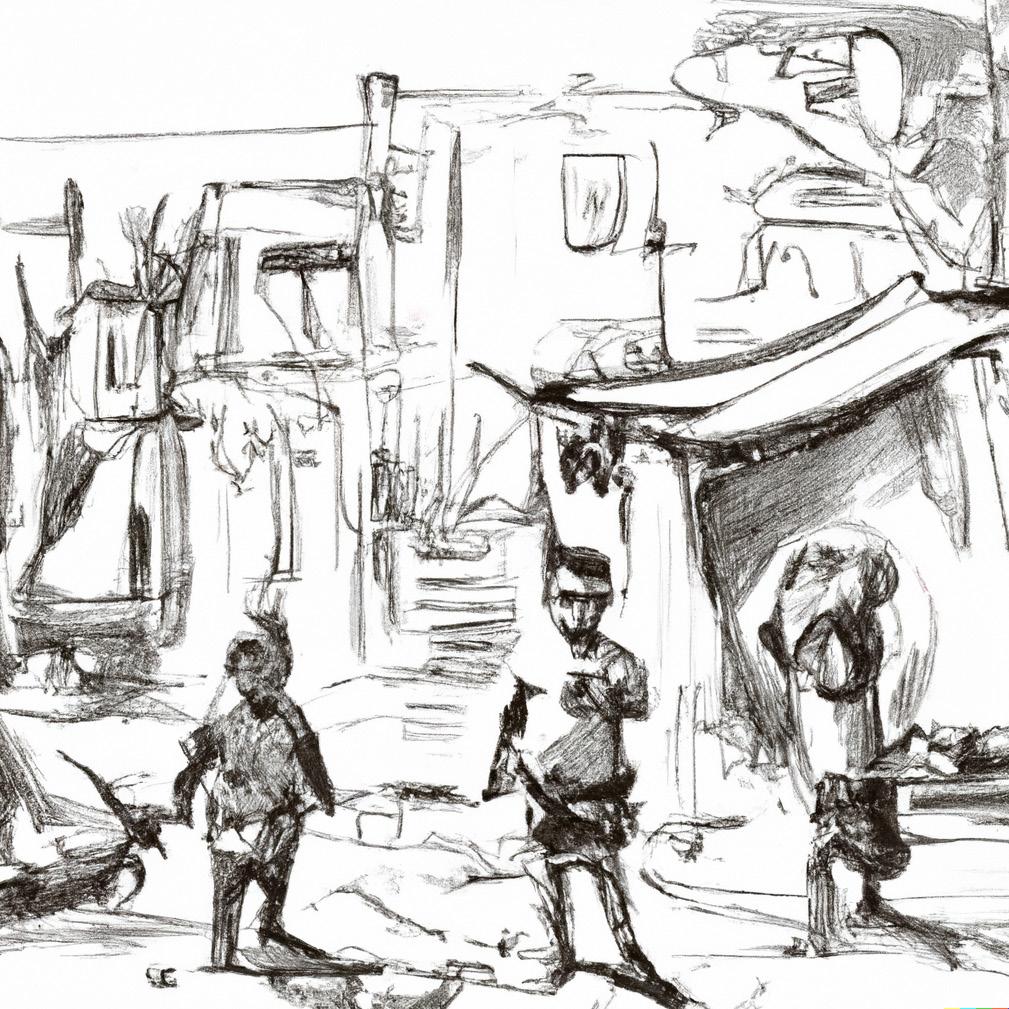
59 | Kunnumpuram,
| (Re) - Gaining Ecological Futures Figure 3.3 Sketch of site
Kochi, India
Low urban spatial conditions
There is a lack of public investment in the area, resulting in very low urban spatial qualities. Poor urbanism is almost serving as a tool for social exclusion from public space. The patriarchic religious society with its norms and culture, combined with the dense dangerous streetscape is resulting in exclusion and gender inequality.
Kochi has had fast economic growth in the last decades, and the city has become very modernized because of this. Kunnumpuram is suffering from this economical contrast, where the surrounding areas are in fast growth and development, and the differences are just getting bigger. This has made members of the community so poor they cannot manage life. The municipality is planning to put all the poorest members of the area into the new Highrise they are building on the last public spot that was left for the community. Even if this was done with the best intentions, we see it as an isolating and dehumanizing act.
Suffering Blue and green public space
Climate change, ecological degradation, and high pollution is resulting in green and blue public spaces that are suffering. According to the European Environment Agency both physical and mental health, and social well-being is depending on green and blue spaces in public. High-quality green space can play an important role in reducing inequalities. (Agency, 2022)
60 | Kunnumpuram,
| (Re)
Kochi, India
- Gaining Ecological Futures
Globalization
“Globalization and Colonialism has influenced the planning system of the global south with planning solutions and ideas borrowed from the global north. Especially from the USA and Western Europe during the last century. In the Global South, many of these old planning ideas are stuck in slow stagnant planning systems. The systems are not changing in pace with the extremely fast-evolving society and its urgent needs. There is no complete solution to all the complex problems that cities are facing. (Watson, 2009)”
Figure 3.4 Girl at the street in Kunnumpuram

Trends
These trends are defining the issues in Kunnumpuram. Where climate change, social issues and ecological vulnerability are overseen, poor urban planning and lack of governance are leading the area into crisis. With no open public green spaces left. The government is suffering from being stuck with old planning ideas and a modernist approach to the crisis they are facing.

61 | Kunnumpuram,
India | (Re) - Gaining Ecological Futures
Kochi,
Figure 3.5 Roofscape in Kunnumpuram
3.3 Pathways’ walkability issues
The research team considered the walkability-related issues of the pathways in Kunnumpuram. Forsyth (2015) grouped walkability definitions into two categories: some discussions focus on environmental features or “means” of making walkable environments, such as traversability, compactness, physical enticing and safety. Others deal with outcomes potentially fostered by such environments, such as making places lively, enhancing sustainable transportation options, and inducing exercise. Based on our topic, we focus on the environmental definition of walkability in Kunnumpuram.
Compact
The compact place with a high density or proximity of destinations and people is an ideal walkable place. According to the interviews, people have access to their daily needs by walking to the public market in Mattancherry. Despite this, they lack proper access to public transportation. Therefore, transportation planning needs to be revised.
Physically enticing
It refers to environments that have full pedestrian facilities. The area is dominated by cars and traffic, and pedestrians are not provided with proper signage or separation from the car area. So, we cannot consider the area as “pedestrian-friendly”. There is not distinguishing between the pedestrian areas and sidewalks, and the car traffic side. And, as there is no appropriate lighting system, nights are pretty much dangerous for the residents to walk freely outside.
A lack of proper urban furniture and facilities for different age groups also plagues the site. In Kunnampuram, there aren’t enough safe inclusive sidewalks to meet the needs of the disabled, such as blinds and handicapped citizens. For people who want to get around and get some exercise, there aren’t enough services available. Furthermore, there are no bike lanes, nor are the sidewalks connected to be considered a “network”. Finally, there is no vista point that would give visual access to the area’s architectural attractions. Safe
Two general features of safety are important to assess: Firstly, the Street design: Sidewalks and safe crossings are essential to walkability. The sidewalks in Kunnumpuram are inadequate, and car areas and walking paths are not clearly separated. The second aspect of safety is aboutcrime and crashes. Although this area is potentially a valuable tourist destination, Kunnumpuram lacks efficient street lighting that illuminates the canals’ surrounding environment at night. Because of this, lack of street lighting is one of the factors preventing the area from having a night life culture which is helpful not only for nights’ safety, but also for the neighborhood’s economy.
Furthermore, based on our interviews, women report a feeling of exclusion from being active in their neighborhood environments because of a sense of insecurity. As the streets could be potentially dangerous for them and their children, they usually do not let their children play outside. Due to safety measures, they even mention that their children must be accompanied to school.
62 |
Kunnumpuram, Kochi, India | (Re) - Gaining Ecological Futures
Traversable
To be traversable, Kunnumpuram paths should have the basic physical conditions to allow people to get from one place to another without major impediments. However, the connection between the two sides of the canals does not accommodate the needs of different groups. Two bridges cross the canal in the research area. One of them was built without considering disabled residents who cannot use the bridge’s stairs. Due to this, disabled people, elderly people, and people who have difficulty using the stairs have to use another bridge that is relatively far away.


Figure 3.6 Bridge
Figure 3.7 Site at night
63
| Kunnumpuram,
Kochi, India
| (Re) - Gaining Ecological Futures
3.4 Gender inequalities
Gender inequalities in India
Gender differentiation is predominant in India. In the market, in the streets, in public transport. Every public space is mainly populated by men. After work, they gather around street shops to drink tea and socialize while the women are staying in their households. The women seem absent from the public space across the city. The only times we can see them accompanied by kids, as a group, or with men.
The perspective and impression of the city as a woman is a different experience (Figure 3.8). By feeling the gaze upon themselves, the women often don’t feel safe walking alone. According to Paul (2011), a gendered sense of place,
resulting in physical and emotional responses, is induced by the social and cultural processes that exist in society. For him “Women’s restricted access to public space is a manifestation of socially produced fear that is constituted by the way space is perceived and imagined.” (Ibid, p.3). Therefore, public spaces become a “spatial expression of patriarchy” (Ibid, 2011).
Gender inequalities on site
Those observations were made similarly at a smaller scale (Figure 3.9). Walking around Kunnumpuram’s streets, we realized how the lack of public space affected women and their safety, enhanced by the cultural norms and patriarchal tendencies observed in Indian society, where women are often expected to take care of the household and to be the “caregivers” while men are the “breadwinners” (Terraza et al. 2020). With nowhere to go and no professions, most of the women are staying inside their houses and very few of them are visible outside. Since their younger age, they are facing gender exclusion in public space, encouraged to play inside when boys can go outside, leading to a
“feeling that they do not belong in the public realm : that the space is not theirs.” (Terraza, 2020).
During our participatory workshop, the aim was specifically to give women a voice. We had the opportunity to speak about their challenges encountered as women in India. In addition to the lack of public space in the area and the cultural traditions, women are not going outside above all because they don’t feel safe. The lights on the streets are not sufficient and the pathways are dangerous.
64 | Kunnumpuram,
| (Re)
Kochi, India
- Gaining Ecological Futures
Women Children No Sitting Arrangements
Drug Addicts Cultural Barrier
Lack of Public Space
Not Enough Lights Polluted Streets
No Pedestrian Friendly Pathways
Figure 3.8 Diagram of the women and youth’s challenges
Connection to theories
According to Paul (2011), women have a different cognitive understanding of public spaces, where the fear of crime is playing a key constraining factor. Moreover, they also fear shame and dishonor. Outside, they are really precautionary. As a self-protection mechanism, they usually restrict their mobility to the places they already know and are familiar with. But those constraints reinforce gendered constructions and the public spaces are constituted through power relations and everyday practices to become the spatial representation of social relations (Ibid. 2011).
“Cities have historically been planned and designed for men and by men. They tend to reflect traditional gender roles and gendered division of labor. In general, cities work better for heterosexual, able-bodied, cisgender men than they do for women, girls, sexual and gender minorities, and people with disabilities.” (Terraza et, al, 2020)
The cities are often the support of gender inequalities . In the World Bank’s handbook for Gender-inclusive Urban planning design, Terraza (2020) explains that in general, urban planning activities have been gender-blind in terms of key aspects of the city/built environment which include access, mobility, freedom from violence, health and hygiene, climate security, housing, and land tenure. Moreover, women are under-considered in many countries. However, as UN-Habitat reminds (1995), women play multiple roles in the Human settlements development process as economic producers, managers of households, producers of services, caretakers, and raising children. They are essential for the community and society and deserve equal rights.
Therefore, efforts must be put into planning to promote equity among all citizens. Paul (2011) encourages women to reclaim space for themselves and Kern (2020) stands that “by first recognizing


these unequal systems and social dynamics, we can then imagine new ways of inhabiting urban spaces.” (Kern, 2020).


Overall, gender inequalities are stringent in many societies and through urban planning, we have the possibility to make a difference in a community to make every group feel safe, included, and integrated.
Figure 3.9 Gender inequality diagram

65 | Kunnumpuram, Kochi, India | (Re) - Gaining Ecological Futures
3.5 Waste management
Waste management challenges
The pollution generated by waste disposal is a threat to the environment but also to health. Urban growth in India is continuously rising and impacts the ecosystem, as it has been noticed on site. “The growth in urban settlements had doubled the generation of solid waste within a decade.” enlightens Mishra (Mishra et al., 2018, p.3).
In the Kunnumpuram’s neighborhood, the waste management system is insufficient and too expensive for the poorest people in the community. Pollution is prominent in the neighborhood, due to several issues (Figure 3.12). Among them, the lack of storing space for the inhabitants to keep the waste in their small houses shared by multiple families. The sewage system releases the wastewater directly into the canal a small meat market nearby is using the canal to clear the waste of their slaughterhouse. Combined with the waste dumping, it results in a strong smell coming from the canal in the whole neighborhood. A man living nearby explained to us that the canal used to be 10 feet deep and is now only reaching his knees because of the accumulation of waste at the bottom of the canal.
The lack of a proper waste management system results in a lot of issues in Kunnumpuram and in India in general. “Uncollected waste often lies outside the designated bins in most of the urban areas due to inappropriate design, capacity, location and poor attitude of the community towards using bins” explains Mani (2015, p.3), and the segregation of waste is almost inexistent in most cities, even though the door-to-door collection is improving.

With a lack of recycling centers, open burning and waste dumps are still the main methods of disposal in India. “These methods are continuous sources of harmful gases and highly toxic
Figure 3.10: Drawing of a polluted street illustrating the situation in Kochi
liquid leachate.” (Mani et al., 2015. p.4) and lead to environmental and health degradation. “The contaminated water affects people’s health and biodiversity. Dumps and exposure increase the risk of negative impacts like the growth of invasive species, pathogens, infections disease and toxicity.” (Mishra et al. 2018)
66 |
|
Kunnumpuram, Kochi, India
(Re) - Gaining Ecological Futures
The waste management system in Kochi
According to the Kerala Solid Waste Management Project (KSWMP)’s study conducted in 2019, 69% is biodegradable but not managed in an environmental manner and 31% is nonbiodegradable and not efficiently managed.
The waste management system from 2007’s used to have public bins. But it did not work and the waste was spreading in the streets of Kochi, resulting in bad smells. Thus, it has been decided to remove the bins and implement a door-to-door collection instead. The removal of public bins makes it almost impossible now to find a place to throw some waste in public areas.
The door-to-door collection consists of two separate bins for bio and non-biodegradable waste, collected once a day, with a cost of 150 Rupees per month per household. But there is a lack of sorting and the collection vehicles are inadequate. The secondary phase of waste collection consist of the transport of waste to the collection centers and need transfer and carriage improvement. As it is now, the transfer of waste is manual and everything is loaded in a centralized space. There is no existing system for sanitary and bulky waste and the waste is only partially processed.
According to the municipality, 90 to 95% of solid waste is now collected. However, a lot of waste is still visible, resulting in environmental, health, and social issues. Among them pollution, with the contamination of water bodies, uncollected waste, that induces the proliferation of rats and mosquitos, open burning, which causes allergies and respiratory diseases, clogging of drains, flooding, and aesthetic issues.

All of those issues have been outlined during a conference about urban sustainability and smart city held in Kochi, in partnership with the E.U. showing that there is already an awareness around those issues and that measures need to be taken. The city of Kochi is capable of creating infrastructures but has issues managing them. Therefore, a better governance structure needs to be implemented.
Gap between stakeholders’ points of view
The main stakeholders in charge of the waste management system are the state of Kerala, the municipality, and GIZ. A state program called KSWMP (Kerala Solid Waste Management Project), supported by the world bank, has for goal to “make Kerala’s cities cleaner, healthier, and more livable”. A master plan to improve the city is also being developed as well as a program called “HEAL Kochi” (Health, Environment, Agriculture, Livelihood). Those ongoing programs show a will for change.
Through the conference and our meeting with Dr. Ramesh from GIZ, it appeared that the hopes are mainly placed in the next generation. For them,
67 | Kunnumpuram, Kochi, India | (Re) - Gaining Ecological Futures
Figure 3.11 Drawing representing waste dumping in India
improving the waste management system comes mainly by education and change of habits. Although there is some truth in it, we were able to observe that Kunnumpuram’s community is aware of the challenges but the lack of adapted facilities makes the situation complex.
For Dr. Ramesh, waste dumping is not an issue for the municipality to take care of but is rather the communities’ responsibility to keep their area clean.
Those different views reveal the huge gap existing between different stakeholders and show that the decision-makers, with a top-down approach, are distant from the community.
It is important to implement policy management that would “drive behavioral changes among citizens, representatives and decision-makers to minimize wastage and littering and maximize reuse and recycling.” (Mani et al., 2015. p.8).
Recommendations from theories


Poor sanitation and inadequate waste management are also associated with furthering ecological and social issues. The main ones are pollution, mosquito breeding, health issues, air pollution through open dumping and open burning, water bodies pollution, a bad sewage system, and a strong smell.
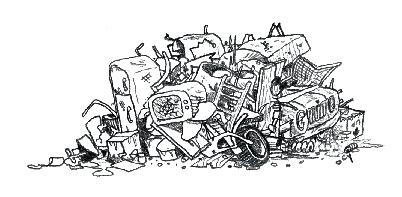
This pollution through waste prevents the community from seeing the value and worth of their neighborhood. Waste management is crucial as it is connected to multiple other challenges and finding ways to improve the situation will help the citizens to gain ownership and livability in their neighborhood.
Thus, waste management is a huge challenge that needs to be tackled in the whole country.
“It is urgent to have a well-defined participatory waste management strategies. The broad procedure of reducing waste are a generation, minimization, recycling, collection, treatment, disposal by considering the economics of disposal procedure including framing policy decisions at state and national level on urgent basis.” (Mishra et al., 2018).




Kunnumpuram, Kochi, India | (Re) - Gaining Ecological Futures
Overall, solutions need to be found and it is important to include the citizens directly in the process to make the area clean, sustainable, and livable for all.
Figure 3.12 Waste management issues diagram
68 |
Figure 3.13 Drawing representing the overall atmosphere of an Indian city like Kochi

69 |
| (Re)
Kunnumpuram, Kochi, India
- Gaining Ecological Futures
3.6 Environmental degradation and canals
According to Moughtin (2005), any discussion of city planning that does not address environmental issues is irrelevant in a time of increasing population pressure on a declining natural resource base, environmental destruction, pollution, and climate change. The problem of pollution at site is bold. Both the Kalvathy canal and Eravali canal, as the main natural assets of the site, were so polluted that they made a negative first impression on visitors and tourists. As one of their negative features, the canals emit a strong foul smell. As a result of this bad impression on tourists and visitors, the economy of the place is adversely affected.
By conducting litterature research and interviewing local residents, we explored the history of the canals, as well as the underlying causes of the canals’ deterioration. Since both canals in the area were “man-made,” they were not natural riparian corridors. According to our interviews, the quality of the water was better.
“Some decades ago, the water was transparent without this much pollution, and fish and other species could be seen in it. The canals have gradually degraded as a result of poor and ineffective management. In addition, no fish species could survive this level of pollution and toxicity, so biodiversity in the area was lost as a result of this pollution.” -Old man living in the area
According to the interviews, people’s pride in their neighborhood has diminished because they think the canals’ strong smell has defamed them. During several field visits, the group observed residents throwing away trash into canals. Therefore, it appears that inadequate education and the lack of responsibility for the neighborhood, along with an improper waste and sewage management system, are some of the main reasons for this degradation.
70 | Kunnumpuram, Kochi, India | (Re) - Gaining Ecological Futures
Figure 3.14: Polluted canal
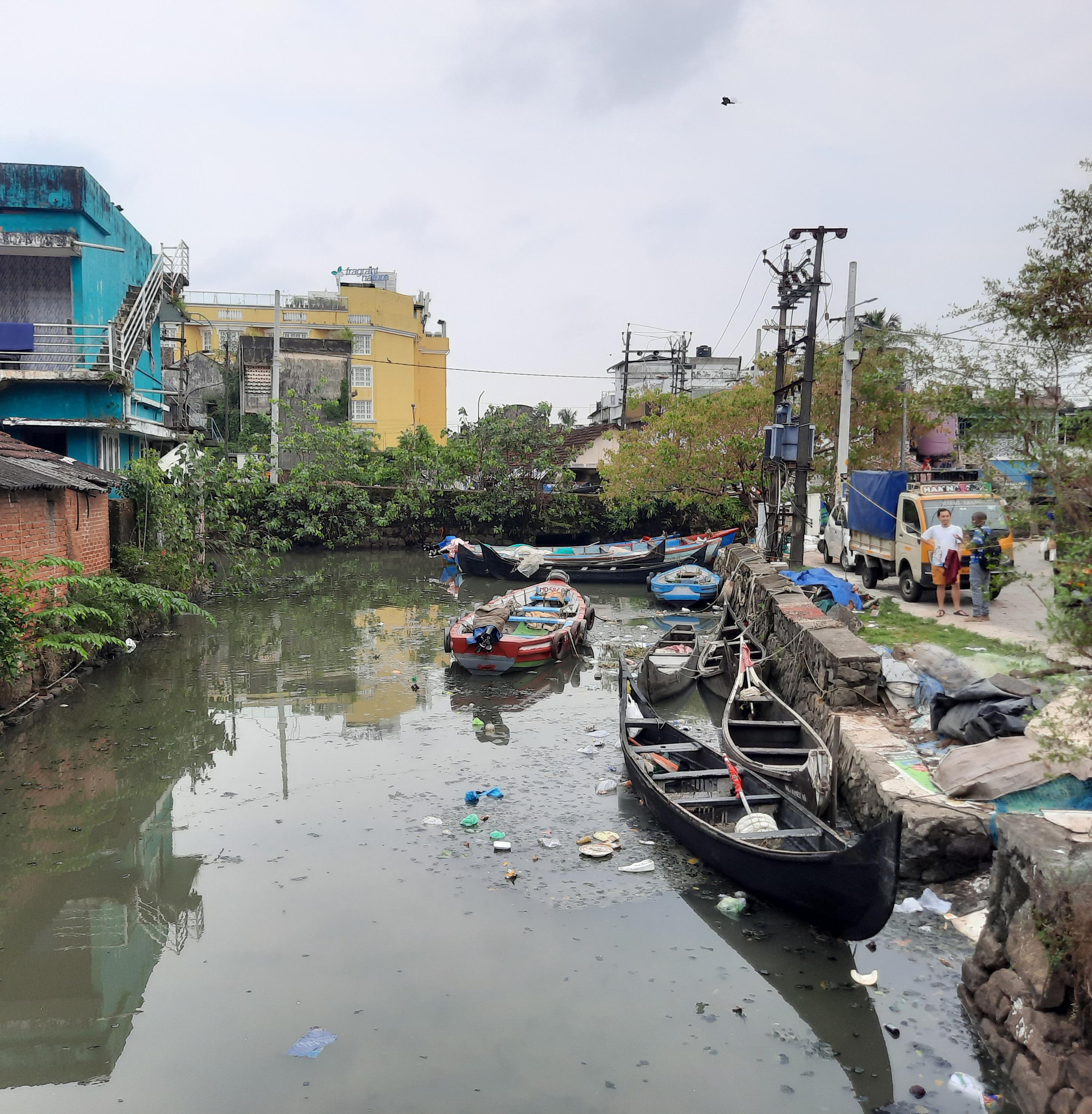
71
| Kunnumpuram, Kochi, India | (Re) - Gaining Ecological Futures
3.7 Chapter end note: the Problem Statement
In this chapter, we presented a combination of woven gender, social, environmental, and economic issues that our site of study, Kunnumpuram, has been suffering from. In this regard, we’ve unified our issues into a single “problem statement” which represent our main points of the situational analysis chapter. Also, we put all of these issues into one single diagram in the following page.
The Problem Statement
Kunnumpuram’s citizens are adversely affected by numerous environmental and governance challenges in their neighborhood. There is an overall lack of resources, on a human, political, and natural scale. As an environmentally sensitive area located in a high-risk zone, they are suffering from ecological degradation like flooding from the canal and the sea, heavy rains, extreme heat, loss of biodiversity, and highly polluted water and soil. The local government has a top-down approach and is not taking proper responsibility for governance issues in the area. Local NGOs are failing to create sustainable change.
This lack of involvement from the broader society is leading to a sense of abandonment among the citizens. Water supply restrictions and improper waste management are putting many lives at risk. Many of the resident’s basic needs aren’t being met. Misgovernance and environmental degradation have resulted in the lack of public space and dangerous streets, threatening women, children, and the elderly.
72
|
Kunnumpuram, Kochi, India | (Re) - Gaining Ecological Futures
Figure 3.15 Overall issues at site














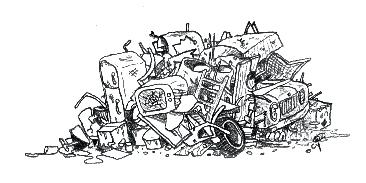


Figure 3.15: Challenges in an overview













73 | Kunnumpuram, Kochi, India | (Re) - Gaining Ecological Futures
Figure 4.1 Inclusive public space
A inclusive lively and resilient community, with native species, a clean canal providing biodiversity and humans co-existing with nature in the urban context of Kunnumpuram
 74 | Kunnumpuram, Kochi, India | (Re) - Gaining Ecological Futures
74 | Kunnumpuram, Kochi, India | (Re) - Gaining Ecological Futures
4. SPATIAL SOLUTIONS
Epowering the community with an inclusive planning
Opportunity statement
A strong sense of community between the citizens is the most important opportunity of the neighborhood. According to our interviews with the local community, they believe that their neighborhood could regenerate and have economic growth if the government expended funds under the local community provisions and allowed them to be more involved in neighborhood decision-making process, together with upgrading the infrastructure of roads, sewage, water, and waste. This area also has a strong natural asset with its canals as a resource, and green and lush trees nearby. As a result, they provide a good opportunity for creating inclusive public spaces that are accessible to all citizens and visitors, including women and children. Another opportunity for development is the community’s sense of belonging to its neighborhood.
A nexus between cultural programming and good urban inclusive planning could help the community use its capacity to flourish.
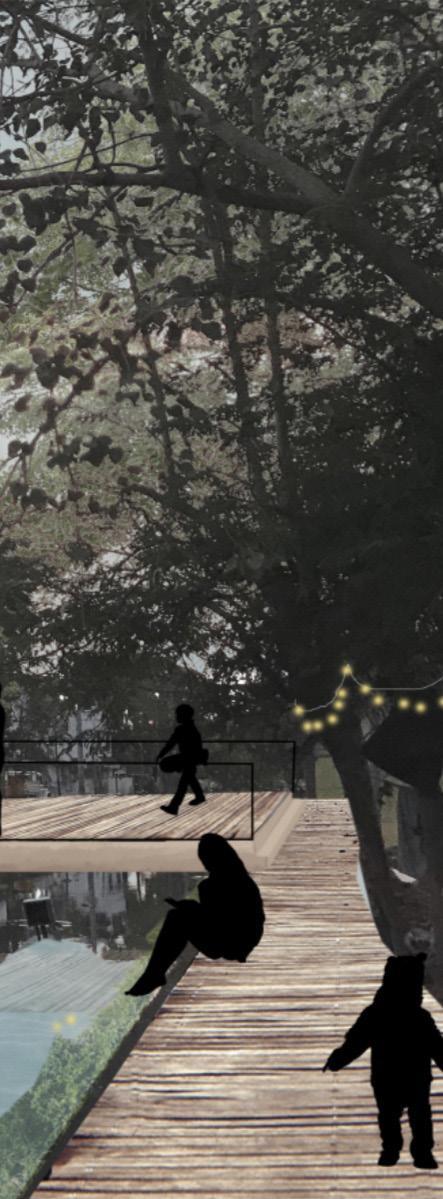
75 | Kunnumpuram,
| (Re) - Gaining Ecological Futures
Kochi, India
4.1. Vision statement
(Re) - Gaining Ecological Futures
Kunnumpuram is a vibrant community in the Fort Kochi area. By starting with small step-by-step interventions the community will hopefully get the opportunity to become a thriving resilient inclusive place. Starting with cleaning the canal, the area regains its historical relation to the canals as the blue public space serving the neighborhood.
In the heart of the area, alongside the canals rewilding and regeneration of natural greenery is happening, providing a habitat for native species to coexist with humans in this dense urban context. These green and open spaces will serve as socially inclusive places, programmed with activities for all groups in society, LGBTQ,, children, women, youth, men, elderly, disabled, both the local community and visitors will be visually invited to enjoy and socialize, regardless of ethnicity or religion. Various responsive governance strategies using social resources from the local community, and actions by the public and private sectors, we hope will unlock Kunnumpuram’s ecological and social potential. Citizens of Kunnumpuram have a central role in this governance process. These participatory development strategies make sense for community and sensitively create the sense of belonging and ownership among the people. In the long term, they support a better ecological and social future for the area and all its inhabitants.
76 |
Kunnumpuram, Kochi, India
|
(Re) - Gaining Ecological Futures

77
|
Kunnumpuram, Kochi, India | (Re) - Gaining Ecological Futures
Figure 4.2 Future image of Kunnumpuram
4.2. Reaching goals and strategies
Increasingly, the complicated problems we are facing, including poverty, climate change and environmental degradation, require solutions that cannot simply be drawn from a single knowledge base (Vogel et al., 2016). Complicated challenges require an effective approach that draw on the views, perspectives and expertise of a variety of actors. This necessitates the use of participatory approaches, and using methods to localize SDGs in the neighbourhood level. Our site, Kunnumpuram, has been facing numerous social, environmental, political and economic issues converge in an interplay that precipitates profound ecological degradation. We must, therefore, ask, within the context of the anthropocene, how the often-conflictual dichotomies between the social, natural, political, economic, and environments can be brought into a sustainable synthesis. In this synthesis, we have to know who the actors are and what (new) knowledges will be required to make this possible.
By providing this set of goals and strategies, we intend to reflect on this complication and propose human-centered planning approaches with radically transformative potentials in the discovery of new, more ecologically just and sustainable urban futures.
We categorized the goals into three sections: firstly, we state our goal about the public spaces, as the central core of our attention. Then, we stated the two other goals, which were about environmental sustainability and waste management. Here, the strategies are quite general and inclusive, encompassing a range of interventions that help us reach our goals.
78 | Kunnumpuram,
| (Re) -
Kochi, India
Gaining Ecological Futures
GOAL 1 : INCLUSIVE VIBRANT PUBLIC SPACE
Make environmentally sustainable public spaces that are safe and inclusive to ensure that the need of all groups in society, both human and non-human are met. With a focus on vulnerable groups like women, children, the elderly, and disabled.
GOAL 2 : SEGREGATIVE WASTE MANAGEMENT SYSTEM
Creating a social and environmental sustainable segregating waste system. Through a circular economical approach, involving the community in different stages.
_
Ensuring waste management policies are being put into action through local community groups in the long run.
GOAL 3 : ECOLOGICAL REGENERATION
Green revitalization and urban re-wilding, in respect of the local context and its natural identity. Providing biodiversity through native species and clean circumstances.
Natural assets of the neighborhood, like the two main canals, remain clean and lively in a long perspective.
79 | Kunnumpuram, Kochi, India | (Re) - Gaining Ecological Futures 01 02 03
4.3. INCLUSIVE VIBRANT PUBLIC SPACE
Green and blue
In Kochi a rapid urbanization has happened without much concern about public space and the green and blue aspects of the city. While proposing the solutions, we have considered the urban environmental problems and ecological crisis . We aim to contribute to an urban human world in balance and co-existence with the natural and non human world.
Inclusiveness
We are creating public spaces with inclusiveness supporting women and children, it should feel safe emotionally and physically. There will be good lights along the roads and canals and also placed in the public open space. The areas will have a spatial openness, with objects for children and everyone, and urban furnitures for social interaction, all in an aesthetically composed manner. These elements, and other programs are engaging with the public. Art and colors are an important aspect, and the project seeks to communicate and benefit the publics interests by creating beauty and visual inviting atmospheres for inclusice and vibrant environments.
The extreme smell of the canals together with high pollution in the area and other marginalizing conditions has, as mentioned earlier, resulted in Kunnumpuram becoming an isolated part of the city. To us the first step of revitalizing the area will be to clean the heavily polluted canals, and transforme them into blue resilient public space. This will happen through many steps, with short and long term solutions involving local urban governance groups, creating knowledge sharing events and cleaning actions, in this way the canals will be maintained and stay clean over time. Where there once were polluted canals that posed a health risk to everyone living near, our project will turn them into clean waterways that will flow through the neighbourhood and create a blue green life force to the community connecting humans and nature.
“The waterway will provide a greener and healthier urban living environment, and give life back to a wide range of species.”
To us, this is the first step of turning the community’s public space around, and transforming it into a socially inclusive, connected, environmentally sustainable area, promoting a better quality of life for all.
The spaces created will be accessible to people by creating good infrastructure and safe continuous sidewalks. We are converting inactive polluted spaces into pedestrian-friendly plazas with landscaping. The informal character of the area will be brought into the project, with flexibility creating relaxed movement patterns. Clean, with a proper waste management system, giving an opportunity for public inclusive space to exist. The long term strategy will be a fully segregative waste system, with a small scale ecological circular economic approach serving as a public resource in the longterm, also serving public space. In the area many different religious groups are living together in a small space, they keep peace and acceptance. The project will keep this in mind, and have respect for different cultures by keeping it neutral to religion. In our project we see public space as an arena for democracy. As Don Mitchell argues, public space is increasingly privatised, and we are seeing a higher level of control of it. This results in a decreased opportunity for democractic action (D.Mivhell). We seek to use public space as a fondation for participatory actions to take place, where local community groups can host events attempting to inform and share knowledge about environmentally sustainable practices in inclusive secure environments.
80
|
Kunnumpuram, Kochi, India | (Re) - Gaining Ecological Futures
The openness and flexibility will give the opportunity for different actors to engage, and various programs could happen and take place at different times.
“Through change of public space we hope to make ownership and social connections, creating community bonds, equality and good experiences. We have chosen some specific programs, to make all people in society actively engaged and to create a fondation especially for women, children, elderly and disabled to be invited as active actors.“
Kunnumpuram has weak governance structures and lack of involvement from stakeholders and the broader society. In our project we are introducing new stakeholders and governance structures to arrange our new spatial context. This will be a flexible and sensitive approach based on the communities own resources and wishes for their future. Together with the involvement of the broader society NGOs and the municipality the project seeks spatial solutions with efficiency end equity. Based on the social culture and norms we have been involved with the programs we have come up with are what we think will be suitable and in hand with the context, creating spaces that will develop and maintain based on peoples true interests. The local character of Kunnumpuram, and its unique qualities are what we search to engage with, highlight and maintain it.

81 |
| (Re) -
Kunnumpuram,
Kochi, India
Gaining Ecological Futures
Figure 4.2 Collage of a vibrant public space in Kunnumpuram
4.3.1 Making the Pathways more walkable project
Kunnumpuram is suffering from an environmental degradation because of the canals’ extreme pollution. So, the success of this proposal is related to the canals’ restoration proposal.
As a result, the aim of this proposal is to make the pathways more inclusive and vibrant. So, we have used the term walkable, which is a more general term that covers inclusivity and vibrancy. We have structured this proposal based on Forthys’(2015) definition of walkabilty which we already explained (refer to part 3.2.1)
To be more traversable, we propose that we need a bridge to connect one side of the canal to the other to provide a better access from Kunnumpuram to Mattanchery. The new bridges have good artistic design qualities, and they are inclusive that let the disabled, and elders pass easily from one side to another. On the entrance of the bridges, some impediments are going to be designed to limit the vehicles’ passing.
As a compact and dense neighborhood, Kunnumpuram could be potentially a walkable zone that provides a variety of options for the residents’ movement and accessibility to the other areas. For this purpose, Kunnumpuram’s residents have an appropriate access to the transportation system that give them a variety of options to go to the other part of the Kochi easily.
To make the neighborhood safer, we need a new participatory approach toward street design that addresses different people’s needs. Based on our need assessment surveys, women, children, and vulnerable groups are feeling excluded from being active in the public spaces.
So, our proposal is an inclusive one that considers different street design-related needs and ideas. For this matter, we think of distinguishing the sidewalks and car lanes with giving the priority to the pedestrians. The connectivity of the sidewalks to create
a network in the whole area and the surroundings is the key in our proposal. Since there are not enough traffic signages on the streets, we also recommend to integrate proper street signs.
As the neighborhood doesn’t have enough parking spaces for cars and autorickshaws, specific spaces are going to be specified for them too. Our case study site is lacking an efficient street lighting system; so, we thought of a street lighting system, to make the area safer at night. Besides, it can encourage the people from the outside together with tourists to circulate more, and it can upgrade the night life culture and economy of the place surround the canals. To make the area more physically enticing, this proposal recommends more urban furniture, like street benches near the canal, safe playgrounds for the children, etc.
82 |
Kunnumpuram, Kochi, India | (Re) - Gaining
Ecological Futures
Figure 4.4 Future perspective
In our future perspective of the canals’ nearby, the sidewalks and car lane are distinguishing. There are more urban furniture in the area, including benches. As there are more street signages, it is more safe for everyone, including the children to be outside. The street lighting system properly illuminates the area at nights which makes it safer at nights.

83
| Kunnumpuram, Kochi, India | (Re) - Gaining Ecological Futures
4.3.2 Placemaking Project: An inclusive green place for the community
In this proposal, our goal is to create an vibrant public place in the vacant area near the canal. The vacant area works as a connection between our own case study and Mattanchery neighborhood (as it is shown in the diagram). In this regard, our main solution is to use the idea of “placemaking” as the lead. Placemaking, in the sense of ‘the art of making places for people’, to paraphrase the definition given in By Design: “Urban Design in the Planning System, includes the way places work and such matters as community safety, as well as how they look.” (Sepe, 2014). So, based on our literature review, we’ve used the term “place” to refer to the practices and literatures surround the concept: placemaking.
Here, our aim as a spatial solution is to make an inclusive comfortable public place that addresses the needs of different genders and ages groups. In this proposal, we’ve concerned the connections between various people and the place in the form of place identity, access and movement discipline of the area, the ecological aspect, and the built form of the place. We’ve structured the different aspects of our concerns in three sections: ‘physical features or appearance of the place, observable activities and functions, and meanings or symbols’.
Enhancing physical features and appearance
As a vacant land which needs to be designed, planting native new trees and shrubs is important. The long-term maintenance of the new plantings is essential. These new natural assets can provide shading and make the place be in the comfort zone to attract the residents to hang around and use it. Using the proper urban furniture, including chairs, water taps, and recycle bins can make the place more appropriate for everyone.
Using urban arts, like sculptures and wall paintings can also be very helpful for the identity of the place. To be more gendersensitive, the design should be done in a way that let the women come and enjoy.
Upgrading observable activities and functions
As our objective, this place must address the needs of people in different ages and genders. Since there is no safe playground for children, we think of providing safe facilities for children under the age 9 to play; plus, we think of creating a safe football court for the older children. The rest of the space could be designed as a small open public space for all as discussed earlier.
Creating a context for meanings and symbols
As a well-designed place that takes community’s needs into consideration, this place acts as an anchor meeting point for different groups of the people.
The “spirit of the place” is an important notice for us in this proposal as Christian Norberg-Schulz (1980) in the 1980s explored it. He stressed that “place” means more than merely location, as there exists a “spirit” which cannot be described by analytical and/ or scientific methods. So, we believe this space could gradually turn to a meaningful meeting “place” for the community.
84 | Kunnumpuram,
| (Re) -
Kochi, India
Gaining Ecological Futures
Figure 4. 5 Placemaking
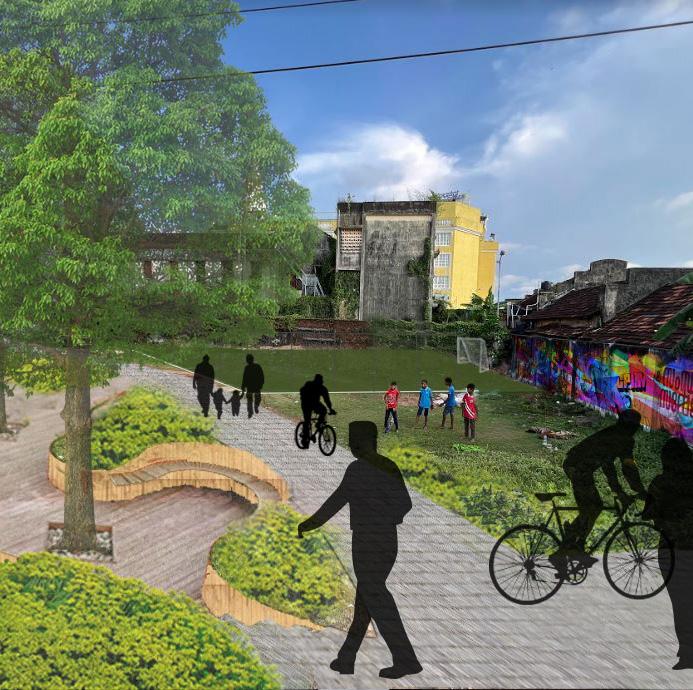
Visualization in a possible fure of the vacant land near the Calvathy canal. In our perspective of our future placemaking, we think of inclusive public places that addresses the needs of different ages and genders. This place is at the comfort zone, and it hosts a food playfield for the children.
 85 | Kunnumpuram, Kochi, India | (Re) - Gaining Ecological Futures
85 | Kunnumpuram, Kochi, India | (Re) - Gaining Ecological Futures
4.3.3 Communal water
Clean Water access to all
The overall goal of our project is to create an inclusive, vibrant public space. Shared communal water will contribute to this goal by providing fresh, clean water to the public. It will also be a program with a special focus on inclusiveness and gender. Because women do not move freely around in the area, collecting water will serve as a legit reason to be outside in the public. The main long-term goal is for the community to be connected to the city’s water-infrastructure. This will also be a way of providing them with proper urban citizenship and a feeling of belonging.
Inclusive water strategy
Shared water taps will be placed in open public areas where we aim to create a foundation for an inclusive, safe, and democratic society. Here, people will be invited, through holistic, spatially sensitive planning, to collect water during the entire day and night. Where open space flows freely along the canals, we see pockets of public space where fresh water will be provided. The long-term solution is to connect the local community to the main water infrastructure of the city. This will be accomplished through collaboration between non-governmental organizations and community groups, which will influence local governments to grant them access.
In a UNICEF report, 2017 Progress on Drinking Water, Sanitation and Hygiene, women have the responsibility of collecting water in 8 out of 10 households with water off premises. Where water is not provided, girls and women are more likely being in response of collecting, than men. Water is important when working towards reduction and elimination of gender inequalities (UNICEF & WHO, 2019). Our water proposal is aspiring towards reaching the goals of eliminating gender inequalities.
As we understood water in the area mainly goes to basic needed activities such as drinking, sanitation, household, and washing. Water access is a basic need and very crucial for all humans. The shared water taps are working towards: reducing inequalities in basic water, sanitation and hygiene services and work towards safely managing water and sanitation services.
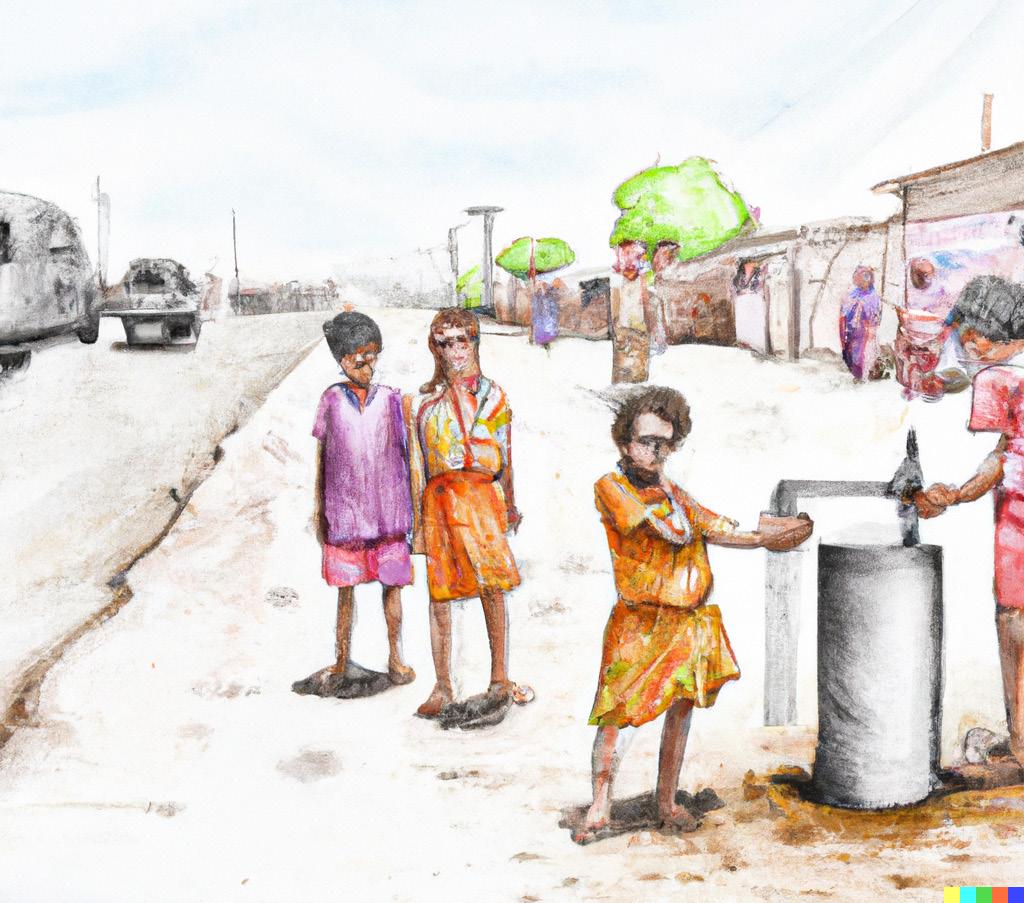
Figure 4. 6. Sketch of shared water taps
86 | Kunnumpuram,
| (Re) - Gaining
Kochi, India
Ecological Futures
The marginalized conditions, and poor context in the are is a result of a discrimination of the people living here. They are not viewed as equal citizens, when being partly cut of the larger city’s water system. This is an indirect supressive approach from the governments side that this project is trying to change.
According to UN water is very essential to keep health, and reduce poverty. It is important to have secure food, safety and security. It is creating peace and it is a human right. Ecosystems and education is depending on it. Water is the cheapest and easiest way to prevent spreading of deseases like corona. To keep clean water acces is a strategy to prevent escalation of climate change and migration. Without an improvement of water infrastructure millions of people will die each year of diarrhea, collera and other diseases. Civil society should make governments responsible for investing in the upgrading of water infrastructure. The investment in water development will promote inclusive environments for women and youth. (UN, 2021).

Figure 4.7 Shared water taps in the street
87 | Kunnumpuram, Kochi, India | (Re) - Gaining Ecological Futures
Cultural acceptance
What we got to understand through our participatory processes, and different ways of interracting with the community was that women do not hang out in the public. If they do not have a reason for being outside, they will stay inside.
To us this was very terrifying, because we could see groups of men hanging out at corners, at “game houses” and sitting in the streets. They were drinking coffee outside, they were driving, working and ruling the public realm. Women were inside, taking care of children, the old, making food - cooking, collecting water, washing. Some were even employed at jobs on top of this.
The shared water will be an intervention that we hope will bring women out in public spaces, we see it as an act of inclusive programming of public space, directed towards women. Where they will have areas to go, talk and share thoughts outside of the house and with a safe and culturally accepted reason.
In the long run, we see the community groups working in collaboration with the NGO’s of the area to push towards getting the government to open for free flowing water 24/7.
Figure 4.8 Sketch of site
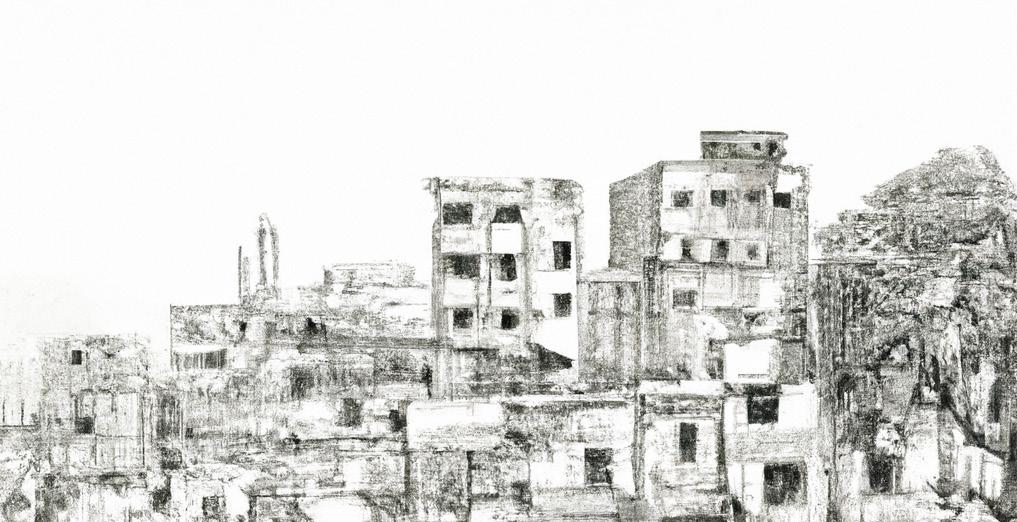
88 | Kunnumpuram, Kochi, India | (Re) - Gaining Ecological Futures
4.3.4 Urban community garden
In this proposal our goal is to provide means for the inhabitants of Kunnumpuram to make their public spaces as their daily part of their lives. In this regard, we will try to engage the locals in the urban community garden project. The goal is to provide inclusive public space and regenerate the ecology for the inhabitants of Kunnumpuram. Urban gardens can act as public space, because as a part of the public realm, the garden has benefits for both humans and nonhumans. Urban gardens offer the neighborhood the “spirit of place” which connects people with nature (Francis, 1989).
Strategy to involve people in community garden
The community will be allocated to the gardens in front of their home. They will be provided with the seeds and the fertilizers made from bio-waste to grow plants in the community garden space. The Ecology Youth Group will provide basic knowledge and instruction about community gardening to the people. The families will be involved to take care of their garden, and this will also be helpful to increase the family and community bonding. We want to involve people in the community gardens and activity which in long run make them realize that the space is related to them and they should be responsible towards the space. Community garden will also help to make the place aesthetic and contribute towards the ecology.
The residents of Kunnumpuram will be connected to the entire area by having urban community gardens, and the sense of ownership will be created among the people. They will use it and benefit from the gardens like small vegetables, fruits etc. When people have more connectivity with space, they will try to keep it clean for their own purpose.
89 | Kunnumpuram, Kochi, India | (Re) - Gaining Ecological Futures
Figure 4.9 Illustration of urban community garden near the canal

90
| Kunnumpuram, Kochi, India | (Re) - Gaining Ecological Futures
Purpose of Community Garden
Urban community gardens will help to regain connectivity with nature and add some social and ecological value. The people will also engage in turning the biodegradable waste into bio-soil and the community garden groups will have influence to create social bonds. The gardens will serve the purpose of public space as well as create small-scale economic value.
The community garden also promotes sustainability by turning the waste into soil and will help to create biodiversity. The highly polluted area will turn into a beautiful site which can have a health impact on the inhabitants as well. It will help to refresh their mental health and to improve physical activity.
SUSTAINABLE COMMUNITY GARDEN
Community Garden Group
Regaining the relation with nature Creating social and ecological value by providing social activity Community based project connecting with small scale economic value

Turning bio-degradable waste into soil
Figure 4.10 Community garden circular - economy

Socio-economic and environmental aspects




91 | Kunnumpuram, Kochi, India | (Re) - Gaining Ecological Futures
4.4. A segregative waste management system
4.4.1. A social and environmentally sustainable segregating waste system
In this proposal, our aim is to implement a segregative waste management system in order to reduce pollution and therefore, provide better living conditions in the neighborhood.
As a means of achieving this, we intend to carry out two different strategies. The first one would be to create a socially and environmentally sustainable segregating waste system, and the second strategy would be to ensure that waste management policies are being put into action through local community groups in the long run.
As depicted in the previous chapter, the waste management system actually implemented is not working and constitutes one of the main issues in the neighborhood. By improving it on an ecological and social level, we hope for the community to regain a healthy and pleasant environment to live in. Through a circular economy approach and by involving the community in different stages, our actions will have different steps, with the aim of inspiring change.
In the short term, the goal would be to improve the collection of waste and segregate it. In order to do so, the idea is to implement shared waste bins accessible for the community across the neighborhood, especially close to the canals where a lot of trash is being thrown away.

Firstly, the sorting would be for bio and non-biodegradable waste as it is what the municipality is able to process for now, and later, more bins will be implemented when other types of materials will be able to be processed by the city. The biodegradable waste will be turned into soil and used in the community garden that will be created.
As well as the sewage system. More shared bins will be implemented to sort glass, plastic, paper. Some of the plastic collected can be turned into sculptures made by local artists and connected to the art biennale that takes place in Fort Kochi every two years and attract a lot of people, shredded glass could be used to build new asphalt, etc. This circular economic approach focuses on the environmental and social aspects (Figure 4.12). By developing new ways to treat the waste, the aim is to repurpose and revalorize as much as possible to create new values for these materials. Instead of being burned or thrown away, the waste will turn into valuable fabric used to improve the neighborhood. The strategy is directly linked to SGD goal number 11 (U.N, 2022)
Figure 4.11 Collage of segregated waste bins immplemented in the neighborhood
92 | Kunnumpuram,
| (Re) - Gaining
Kochi, India
Ecological Futures
which encourages to “Make cities and human settlement inclusive, safe, resilient and sustainable.”. This goal is directly related to chapter 7 of Agenda 21 where the 4th goal is to “promote the integrated provision of environmental infrastructure: water, sanitation, drainage, and solid waste management.”
We strongly believe that Kunnumpuram has the opportunity to become a thriving, resilient, and inclusive community. And by starting with small step-by-step spatial interventions we would like to inspire some changes that will improve people’s lives.
Figure 4.12: Diagram of our circular economic approach
To support those spatial solutions, a new governance system needs to be implemented to ensure the maintenance of the new system. Through community groups and the involvement of decision-makers, the improvement of a segregated waste management system will enable the community to have clean and pleasant public spaces in their neighborhood.

93 | Kunnumpuram,
India | (Re) - Gaining Ecological Futures
Kochi,
4.5. Ecological Regeneration
Canal Revitalization Project
Regenerating the ecological features of Kunnumpuram is the main goal of this proposal. Here, we intend to create a close and friendly interrelationship between the people and the canals. The continuation and long-lasting nature of this link is the key for this proposal to become successful. So, both the local community and the public sector have their own responsibilities to contribute to this proposal.
Canals have become an important blue infrastructure in the area since their creation. Through the provision of multiple co-benefits, blue-green infrastructure (BGI) is widely recognized as a way to manage urban water challenges, enhance society, and protect the environment. By choosing the BGI approach, we observe canals in their social contexts (O’Donnell, 2021).
Our proposal’s most essential point is ensuring that residents are informed enough to understand the repercussions of canal pollution on their livelihoods. People who are knowledgeable about the canals feel responsible for the present and future of them as part of their neighborhood’s identity and character.
This “resident awareness” proposal involves various groups of citizens, including women, children, and the elderly.
The role of the public sector in this proposal is crucial. The first step towards reversing the present unpleasant situation of the
canals is to implement periodic temporary cleaning projects.
First, the canals will be cleaned, and residues will be removed; then the transition between the canals and their surroundings will be changed. The transition should be soft and inclusive enough to allow the local community and visitors to interact actively with the canals. By fostering close relationships between people and the canals, this proposal aims to improve the liveliness and vibrancy of the context. Also, environmental regeneration is considered when restoring the environment of the area. It is evident in the canals that biodiversity is declining because of high levels of pollution and toxicity. Therefore, we believe this restoration proposal could attract new species, such as fish and birds. As a result, the soil food web can be revitalized, which is severely polluted now due to improper waste management and water pollution.
Keeping the canal clean and attractive requires long-term strategies. It is necessary to establish a strong dialogue between the public sector and residents. This will enable us to find further initiatives to maintain the canal and the surrounding area as a pleasant place for the neighborhood.
94 | Kunnumpuram,
| (Re)
Kochi, India
- Gaining Ecological Futures

95 | Kunnumpuram,
| (Re) - Gaining Ecological Futures Figure 4.13
Kochi, India
Ecological regeneration
96 |
Kunnumpuram, Kochi, India | (Re) - Gaining Ecological Futures
Figure 4.14: Map of our spatial solutions
Map of spatial components
Segregated waste bins
Pocket areas for new public spaces
Community gardens
Shared water taps
97 | Kunnumpuram, Kochi, India | (Re) - Gaining Ecological Futures
4.6. Chapter Endnote
Participation
In the book, “The Placemaker’s Guide to Building Communities”, Nabeel Hamdi describes how communities’ critical stakeholders are playing an important and crucial role in design and planning processes. According to him, they should be involved in the implementation of projects and their programming. To him, participatory development aims to create a foundation for the community to be able to help themselves with their own resources, and cooperation, and for them to sustain the development of their community. Based on the community’s own resources, instead of external assets only. Planning is a complex and difficult process, and should be genuinely participatory. The projects should derive from the community’s real issues. Trying to seek out the opportunities, create meaning and ownership, which are potentially powerful drivers for change. (Hamdi, 2010)
Image of the future
In our project, we have used the participatory approach as our main driver of change. Through engaging with the community we tried to understand their images of the future. And that is what the different elements of the project are built on. How we could make solutions, culturally rooted within the local context, meeting the true issues and needs of the area. And archive them through co-creation and production. Contributing to making good inclusive places.
We have implemented long-term strategies for how changes will be sustained on a social and economical level, through different steps. Participation action research has made us understand what issues the community was facing. This was a complex process of reflective learning through good communication with the community. The spatial solutions are all together working towards creating a shared context of meaning for the community, creating purpose, equality and justice. The structures we are proposing are flexible and adjusted to the local context of informality and the unknown. The processes we are proposing are following an organic, flexible, and natural logic. where one spatial intervention is creating an opportunity for the next one to occur.
Public places
The resilient, inclusive, open, clean public green and blue places we are aiming for and the spatial solutions and interventions we have implemented, stem from the local community and its wishes, needs, and desires. The re-regenerated places are programmed with a specific intention that takes the local context and culture into account. The main aim is for the places to give meaning to the spaces they are located within. And for them to provide gender inclusivity through social programs and spatial aesthetical character using colors and shapes. Green and blue infrastructures socially and ecologically programmed, will host biodiversity and greenery by including native species. The project is honoring and inviting the natural silent world to participate as an equal participant in the community. As the overall aim is to (Re) - Gain Ecological Futures in regard to eco-feminismsocial, green, and blue ecology, creating vibrant and healthy urban communities.
98 | Kunnumpuram, Kochi, India | (Re) - Gaining Ecological Futures
Driver for change
We have set goals and priorities for the interventions based on the SDGs. Many issues and opportunities were present, and we have sorted out the onse most pressing, and what we believe is the most relevant and urgent once to deal with.
The local communities have strong social bonds, and are used to helping each other, this is an important social resource, we are planning for the community groups to co-create and co-produce with NGOs and local stakeholders, and be the drivers for change when working towards achieving the spatial solutions.
Power-sharing
According to Hamdi (2010), the role of the expert is an interdisciplinary person cultivating opportunity. Participation is a power-sharing and partnership process. People’s rights, and livelihoods, and governance are what come first. Planning is about creating places instead of spaces, with a sense of community and purpose. (Hamdi, 2010)
Understanding the communities desires through participatory actions, based on cultural values and inclusiveness, going beyond the transactional, relating to meaningful societies based on the needs of the community. (S .Rosad, 2020)

99 | Kunnumpuram, Kochi, India | (Re) - Gaining Ecological Futures
Figure 4.15 Painting of the Calavathy canal

100
|
Kunnumpuram, Kochi, India | (Re) - Gaining Ecological Futures
5 GOVERNANCE Roles and Responsibilities
Figure 5.1 Governance

101 | Kunnumpuram, Kochi, India | (Re) - Gaining Ecological Futures
CHAPTER
5.1 Urban governance
In our project, our spatial solutions require the involvement of different stakeholders for a better governance system. Their involvement is not only going to help in this respect, but their proper collaboration is also solenly needed. In this regard, good urban government might be beneficial. Urban governance finds attention on concrete institutions and their financing, roles, and responsibilities. Urban governance concentrates on including citizens, communities, private-sector actors, and voluntary organizations to ensure democracy and accountability (Mike Raco, 2020). In our project, the most important thing to look up to is how to manage the roles-responsibilities and finance, and in this respect, urban governance strategies can help to manage the project. In urban governance, stakeholders are the most important components. The main concept is the collaboration among government organization, private sector and most importantly the citizens. Urban governance keeps an eye on the development of policies as well as their execution from the upstream to the downstream, mediating between the citizens and other parties (Bingham, 2006). As our project presents various spatial solutions, the development of policies regarding proposals is needed to ensure the proper implementation and management of the proposals with a bottom-up approach..
Significant Stakeholders
In the course of our fieldwork, we met various stakeholders with diverse power interests and visions for the neighborhood. Our spatial solutions alone couldn’t be implemented without the help and support of a good governance structure, involving decisionmakers as well as the community. Therefore, we selected a range of stakeholders that we thought would have the most power and/ or interest to actively contribute to the implementation of these solutions (Figure 5.2). Each of the stakeholders selected has a specific scope of responsibilities. A specific focus is made on the community, which has low power but high interest. We created some community groups, who, with the help of local NGOs, will take action and finally regain ownership of their neighborhood.
Kunnumpuram, Kochi, India | (Re) - Gaining Ecological Futures
Municipality
In the Kunnumpuram project, the stakeholders have a significant effect in the implementation of the proposals, and the strategies can serve as a guideline for progress. The Municipality is the main governing authority which has intensive involvement in improving public space, waste management and environmental aspects of the entire Kochi city. The municipality holds the most influence and finance for any project’s implementation. The municipality in that area has the most power and their collaboration with other stakeholders like GIZ and CSML can be extremely important regarding waste management and public space.
GIZ
GIZ is a German Development Agency which works in collaboration with the municipality for waste management. This private sector actor provides financial and managerial support to the municipality. The GIZ is also working on gender inequality, climate change, livelihood and housing related issues in the city, and also launched a “Pilot Program - Venture Initiation Program” in 2021 to promote women entrepreneurship in Kochi (Jahnsen, 2021).
CSML
The recent organization CSML (Cochin Smart Mission Limited) is working for both public space and canal cleaning issues with a big amount of budget around Kochi (Times of India, 2022). The main mission of CSML on our site would be to rejuvenate the prevailing urban ecosystem through Area Based Development strategies. In this aspect, CSML can have a major impact in the Kunnumpuram area.
In the Kunnumpuram project, the urban governance can introduce three new community organizations named Ecology Youth Group, Waste Management Youth Group and Community Garden Group. Their main motive would be to educate people and raise awareness in the community and ensure the engagement of people in the implementation of the strategies.
102 |
INVOLVEMENT OF STAKEHOLDERS











Figure 5.2 Diagram regarding involvement of stakeholders in proposals

103 | Kunnumpuram,
India | (Re) - Gaining Ecological Futures
Kochi,
Actor Responsibility
In our project, each strategy will find different stakeholders responsible for the implementation and maintainance of the proposals (Figure 5.3).
Creating safe and inclusive public space

In this strategy, the municipality and CSML will be responsible to create safe and inclusive public spaces. The NGO “Navajeevan Community Development And Innovations Network” will help to collaborate with the community for inclusive space. The Ecology Youth Group and the Community Garden group will work together for urban community garden to create a bond between the inhabitants and make the public space more pleasant.
Creating a social and environmentally sustainable segregating waste system


In creating a sustainable segregated waste management system, the municipality and GIZ will have the main responsibility for waste collection and processing. The NGO “Centre for Environmental Efficiency” will collaborate with the community
and support them to raise awareness regarding open burning and dumping of waste. The Waste Management Youth Group will also work with the NGO and the community to educate people about the reduce, reuse and recycling of plastic waste.
Ecological aspect : Creating sustainable urban gardens and cleaning the canal
The Ecology Youth Group and the community garden group will be the main actors responsible for the implementation and maintanance of the urban gardens in a collaborative way.
Regarding the cleaning of the canal, the municipality will give funds to the project and the NGO “Foundation for Restoration of National Values” will collaborate with the municipality to clean the canal as it has been done previously in the Ernakulam Market Area. Further, this NGO will contribute to the environmental aspect of the Kunnumpuram area by ensuring that the canal stays clean and with different programs. And the Ecology Youth Group will help to raise awareness among the community regarding the canal.
Figure 5.3 Diagram of stakeholder responsibility
104 |
Kunnumpuram, Kochi, India | (Re) - Gaining Ecological Futures
Figure 5.4 Sketches of stakeholders meetings
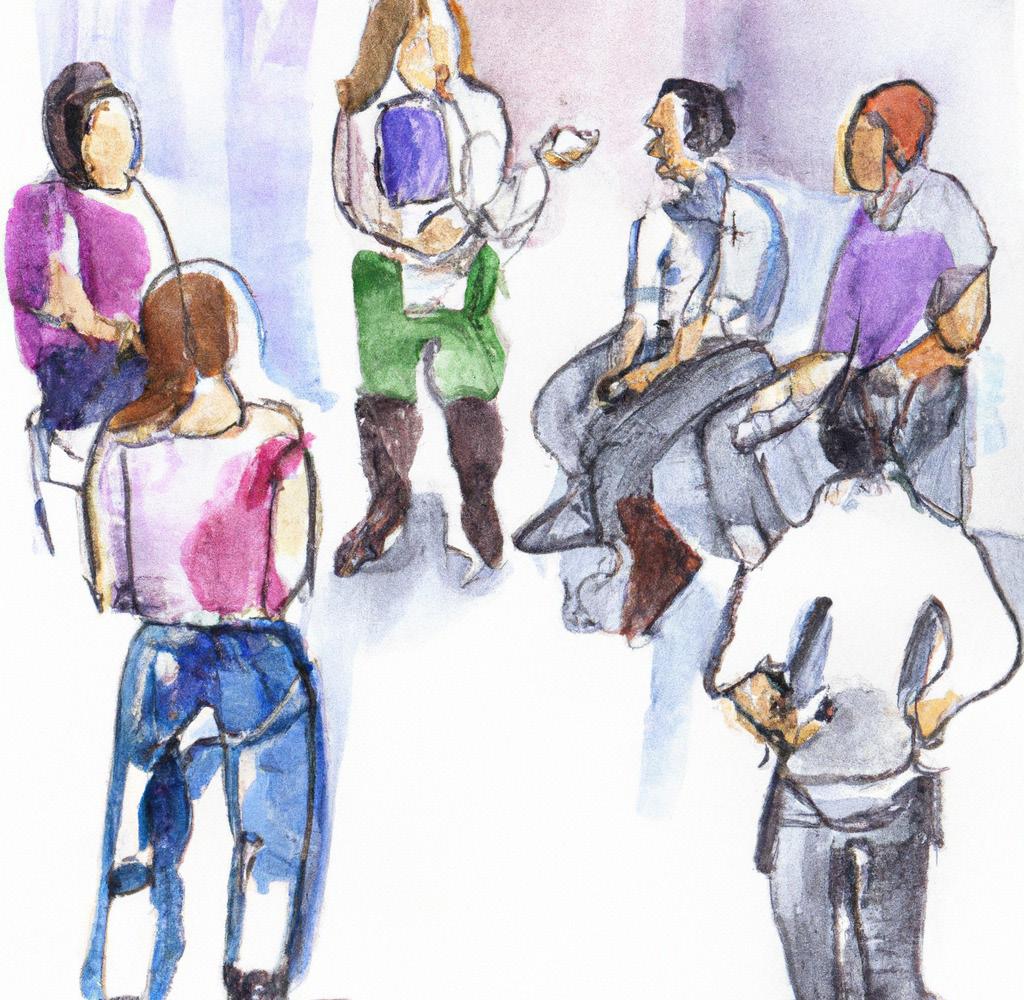

105 | Kunnumpuram,
| (Re) - Gaining Ecological Futures
Kochi, India
5.2 Strategies of governance towards inclusive public space
The main strategy of governance is to involve various stakeholders specifically in different stages of the creation of inclusive public spaces. The clarification of each stakeholders responsibility in each stage of the project as well as the community involvement will ensure the management of the project. Regarding public space, urban governance could play a significant role as it is quite difficult to manage spaces without the involvement of the community. Nowadays, Kunnumpuram has a lack of public spaces due to high density, highly polluted spaces and lack of security. The provision of spatial solutions is not enough, therefore, a proper urban governance can help for the solution to be efficient and effective for the place.
First step in 2023:
The municipality along with CSML can work together to provide social-inclusive space with facilities like shading, shared water taps, solar lights, shared waste bins, native plants, and urban furniture. The pedestrian and disabled friendly pathways should be introduced and the local roads infrastructure should be improved.
Further steps in 2024:
As the existing transition between the canal and the pathways are so intensive, people do not feel a close connection with the canal. This detachment can be erased thanks to the creation of soft transitions between the canal and the pathways. CSML has a budget to create public spaces and should work with the municipality to implement it, as it will help to incorporate people. The materials should be permeable and natural, to become a bridge to connect nature with the build environment. CSML can also help to provide signage in the public spaces to make it more user friendly. In addition, the community would create art and sculptures that can reflect the history of Kochi city and influence people to be conscious about their spaces and a sense of ownership will create.
Further steps in 2025:
The structure and spatial solutions are not enough to make the project successful, the awareness and consciousness about their spaces from the inhabitants are the most important things. In this regard, the collaboration with the NGO “Navajeevan Community Development And Innovations Network” could be a powerful way to connect with people. They could arrange knowledge sharing programs with the community about public space and the importance of biodiversity.
Long term solution in 2030:
In the long term the Ecology Youth Group will be involved in this project and further the upgradation of roads and waste management system will help to create an inclusive space. In the long term vision, the water transport system could be involved in Kunnumpuram to have a heritage purpose and tourist attraction. A spacious bridge over the canal could be a space for the public to enjoy the beauty of the place with just pedestrian access. With all stakeholders’ collaboration, the main motive of the project would be to regain the relation with nature.
Focusing on SDG Goal
In the Kunnumpuram area, by providing inclusive public space we can progress towards the SDG Goal 11.7: By 2030, provide universal access to safe, inclusive and accessible, green and public spaces, in particular for women and children, older persons and persons with disabilities.
106 |
Kunnumpuram, Kochi, India | (Re) - Gaining Ecological Futures
PUBLIC SPACE AND URBAN GOVERNANCE
First step in 2023: Municipality + CSML
Providing social-inclusive space with facilities like shading, shared water taps, solar lights, shared waste bins, native plants, urban furnitures
Creating pedestrian and disabled friendly pathways
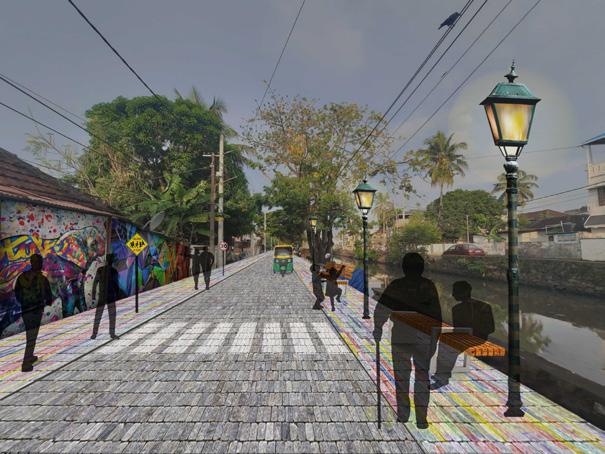
Upgrading local road infrastructure
Today
Tomorrow
Existing situation:
No public space
The area is filled with trash
No lights and security
Presence of drug addicts
Highly polluted canal and dangerous roads
Further steps in 2024: Municipality + CSML
Further Process
Long-term solution in 2030:
Municipality + CSML + Ecology Youth Group + NGO-Navajeevan Community Development And Innovations Network
Upgrading infrustructure regarding roads and sanitation system and waste management
Returing water transport system for heritage purpose and tourist attraction

Regaining the relation between the community and the canal by providing a wide bridge
Aware Long Term
Figure 5.5 Diagram regarding strategies of governance towards inclusive public space
Soft transition from pedestrian pathways to the canal
Use of permeable and natural stones to make it more nature friendly Use of art and sculptures to give some aesthetic look Use of signage to provide user friendly space

Focus on Public Space in 2025:

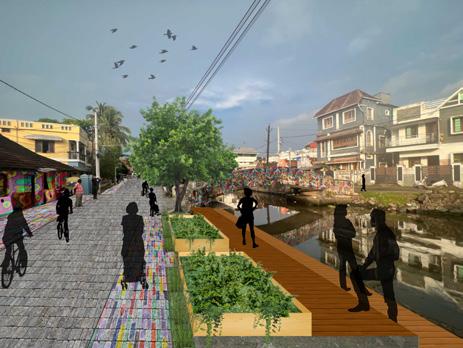
Municipality +CSLM + NGO-Navajeevan Community Development And Innovations Network
Pedestrian friendly and Inclusive design
Safe and secure Knowledge sharing
Open public space with community engaging programs
Proving biodiversity
107 | Kunnumpuram, Kochi, India | (Re) - Gaining Ecological Futures
5.3 Strategies of governance towards cleaning the canal
The main strategy is to organize the stakeholders involvement for each steps towards cleaning the canal.
First step in 2023: The continuation of the link between people and the canals is the key for our proposal to be successfully governed. Therefore, both the local community and the public sector have their own responsibilities. By working with CSML, the municipality can implement periodic canal cleaning projects and eliminate the underlying causes of canal pollution. To begin with, the municipality could clean the canals with the help of CSML in 2023. Kunnumpuram, which is part of Fort Kochi, must also be included in the master plan for the zone’s sewage system improvement, so that the sewage outlets of the houses are not directely connected to the canals, and therefore to the ocean. As presented earlier, this project requires a promising waste management system for the public sector on the site.
Further step in 2024: Moreover, to keep the canals clean, we recommend for the local community to get involved and support the cleaning project, as a long-term sustainable solution. The idea is for the community to take canals as a part of their neighborhood’s identity, so they won’t let the canals get polluted in the long run. Thus, we came up with a public awareness program that couls start in 2023 and for further years. We aim to educate residents about the threats and health risks associated with environmental degradation in general and canal pollution in particular. The involvement of a local youth group could be extremely beneficial in this regard. As a result, this group can present a vision in which the canal will provide a pleasant environment for the neighborhood. The volunteers in this group should be equiped with relevant educational knowledge regarding the subject. In addition, they should learn effective communication techniques to deal with different groups of people, including women, children, and the elderly. Creating informative signage near the canals and organizing community gatherings could be some of the activities of this group.
Long term solution in 2030:
In this whole process, the involvement of the NGO “Foundation for Restoration of National Values” could be a partnership process with the government. The same NGO worked with the Municipality before in the Ernakulam Market canal. Further collaboration can bring more value to this project as they were associated previously with the canal cleaning project in Kochi city. The collaboration among the government, the private sector actors, NGOs and the community will help to progress the entire system of environmentally sustainable neighborhoods and will create biodiversity in a natural process.
108 |
| (Re)
Kunnumpuram, Kochi, India
- Gaining Ecological Futures
Focusing on SDG Goal
With cleaning the canal and regaining biodiversity, the SDG goal 6.6 -Protect and Restore Water-Related Ecosystems could be achieved in the Kunnumpuram area. This SGD goal focuses on the protection and restoration of water related ecosystems like wetlands, mountains, forests, lakes etc. As in the Kunnumpuram area, the Calvathy canal is a natural wetland which eventually lost its ecosystem regarding high pollution and environmental degradation.The restoration of this canal’s ecosystem could be helpful towards this SDG goal.
ENVIRONMENTALLY SUSTAINABLE NEIGHBORHOOD
CANAL AND URBAN GOVERNANCE

First step in 2023: Municipality + CSML
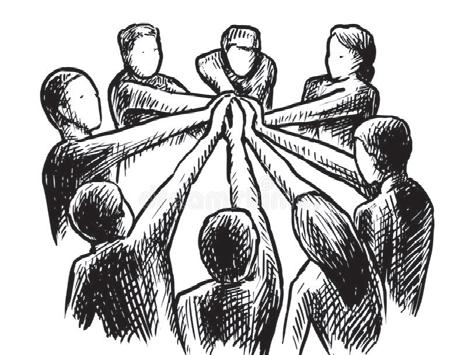
Removing all the pipelines and providing proper sewerage sytem Cleaning the canal and digging up the waste like done
Long-term solution in 2030: Municipality + CSML + Ecology Youth Group + NGO-Foundation for Restoration of National Values
Keeping the canal clean providing biodiversity
Today
Tomorrow
Existing situation:
Bad odor from the canal Filled with dumped waste Open sewerage system directly running into the canal resulting in a highly polluted area

Further Long Term
Figure 5.6 Diagram regarding strategies of governance towards cleaning the canal
Further steps in 2024: Municipality + Ecology Youth Group + NGO-Foundation for Restoration of National Values
Maintaining the canal clean Creating community awareness programs
109 |
| (Re) - Gaining Ecological Futures
Kunnumpuram, Kochi, India
Strategies of governance towards sustainable waste management
5.4
The main strategy is to ensure the involvement of significant stakeholders in specific steps towards sustainable waste management system. In the existing system the municipality is collaborating with GIZ. Though they are trying to invent a lot of ways to make the solid waste management system sucessful, the lack of communication and collaboration in a community level is failing the project.
First phase in 2023:
As an urban governance solution, GIZ could collaborate with the Local Waste-Management Group for collecting both bio and non-bio degradable waste in a new segregated system that can also be connected with the Urban Garden concepts. The new waste management system along with the urban garden concepts will inspire the inhabitants to be the active participants. There should be enough segregated bins along with the roadsides for people to easily access them. The collection of waste should be adapted to the needs and could be twice a day - once in the morning and again in the afternoon. The non-biodegradable waste should be collected by GIZ and the biodegradable waste will be collected and processed into bio-soil (fertilizer) by the local waste management group and the Urban Garden group. The bio-soil will be reused in the community gardens and the residents will be the ones who will care for them. By involving the community with the community garden concept, the hope is for them to become more responsible towards the waste management system and have benefits like vegetables and fresh herbs from the garden.
Further steps in 2023:
The recycling and reusing concept should be introduced to the residents through public awareness programs and teaching sessions in collaboration with local NGO’s such as the “Centre For Health Intelligence Learning And Development”. The public and private organizations partnership is an important concept for a good urban governance. Thanks to the involvement of NGOs, the community, GIZ, the Local Waste Management Group and the municipality, the existing system can be turned into an efficient and organized system.
Long term solution:
The Kochi city can collaborate with E.U. for long term solutions of waste management with proper handling of wastes segregated into plastic, metal, paper, bio, residual, and hazardous waste. By focusing on having sustainable waste management system in Kunnumpuram area, we can achieve the SDG goal 11.6- by 2030, reduce the adverse per capita environmental impact of cities, including by paying special attention to air quality, municipal and other waste management.
110 | Kunnumpuram,
| (Re)
Kochi, India
- Gaining Ecological Futures
WASTE MANAGEMENT AND URBAN GOVERNANCE
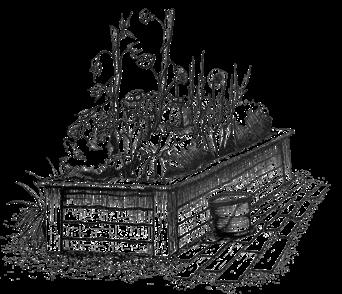

First step in 2023: GIZ + Municipality + Local Waste Management Youth Group + NGO- Centre For Environmental Efficiency
Shared public waste bins for bio and non-biodegradable waste Incresed waste collection to twice a day Biodegradable waste turned into soil for community gardens

Today
Existing situation:

Segregation system of bio and non-biodegradable waste GIZ collecting once a day Cost 150 rupees per month Dumping of waste and open burning
Further steps in 2023: GIZ + Municipality + Local Waste Management Youth Group + NGO- Centre For Environmental Efficiency
Long-term solution in 2030: GIZ + Municipality Group + Local Waste Management Youth Group + NGO- Centre For Environmental Efficiency + in Collaboration with EU
Upgraded segregation system in the entire city of Kochi resulting in proper handling of waste segregated into plastic, metal, paper, bio, residual, and hazardous waste
Awareness raising in 2023 and further: GIZ + Municipality + Local Waste Management Youth Group + NGO- Centre For Environmental Efficiency
Bottles and plastics will be separated and recycled Community awareness raising program about reuse and recycling Improved performance of waste generation and separation systems

111 | Kunnumpuram,
| (Re) - Gaining Ecological Futures
Kochi, India
Tomorrow Further Process Aware Long Term
Figure 5.7 Diagram regarding strategies of governance towards sustainable waste management
Reflection
The urban environment in Kunnumpuram has rapidly changed over the last decades due to extreme urbanization in Kochi, and unplanned random development. Without any planning, the area has just expanded inwards, creating dense and dangerous environments, unsupportive of humans and nature. After one month of intense fieldwork, the learning process has been long and insightful.
We were using UEP values and focused on putting the citizens first and on challenging conventional urban planning strategies. We started with walking around Kochi, to select a site. We came across many interesting areas, and ended up choosing to work with a community in Fort Kochi, named Kunnumpuram.
This community is in an isolated part of the rest of the city with small houses, high density, and no open public space. They are lacking resources on many levels, while potentially having many opportunities.
Currently, the area is very polluted with a lot of waste. There are two canals running through, stagnant, with a bad odor from all the waste they are filled with. Walking around in the area, we observed, talked with people, and took pictures. After some time, we started to build contacts and did various participatory events with the community.
They invited us into their homes and lives with kindness and openness beyond what can be described. We got served chai tea, and other treats, while talking about issues, ideas, solutions, opportunities, and life. We had a huge language difficulty at the beginning of the project, but later, the help of translators from India, we broke this cultural bridge, making it easier to approach the community, and got the opportunity to really understand the needs and wishes of people. We tried to embrace the mess of the process, and work with it. Not sorting out and organizing. We planned for the unplannable
and gave the chance a chance. This leads us to surprises and networking with stakeholders and community members.
We gathered social and spatial information, which gave us the opportunity for planning. We got to see Kunnumpuram through many individuals’ eyes, and their perceptions. The conflicting interests and values in the area revealed themselves through these interactions. And after meeting with the same families through various visits, we started to build trust and friendship that continually helped inform our process. We used theories and linked them to our empirical observations to better understand the urban complex context we were working within. Studying an informal livelihood like Kunnumpuram made us reflect on our process, while we were in it. With its diversity and different social structures, we engaged with it. The personal and direct experiences we had, together with the theories and methods we have used, have broadened our perspectives as student researchers, and coming professionals.
The spatial solutions and governing structures we have proposed were emerging from the process. We searched for the larger underlying themes in the community, and what could lead to self-sustaining governing structures of meaning and value, where individuals could engage with organizations, creating good places and public spaces in their community. Combined with the knowledge we gained from the community, the theories, scientific proof of climate change, and other reports about topics like the city of Kochi, it helped to build an idea bank as a basis for our project.
The solutions we have come up with are supposed to be practically useful and manageable based on the existing situation and context. We always tried to work with a holistic and sensitive approach, bringing the ideas of the community and context into our project as a priority. We wanted to start with where it counted the most, and that
112 |
Kunnumpuram, Kochi, India | (Re) - Gaining Ecological Futures
we think was for the area to regain and get a new relation to public space, and water, and bring back the potential for flora and fauna to co-exist with humans. By starting with cleaning the canal, and maintaining it clean with governing structures, we think the community will have a foundation for the other interventions to happen, and for this to contribute to a better future for the natural and lived environment in Kunnumpuram.
 113 | Kunnumpuram, Kochi, India | (Re) - Gaining Ecological Futures
113 | Kunnumpuram, Kochi, India | (Re) - Gaining Ecological Futures
Figure 5.8 Painting of
Kunnnumpuram at night
Conclusion
The fieldwork and research we conducted in the Kunnumpuram’s neighborhood helped us understand the larger challenges and structures that affect the entire city and the Global South as a whole. As per Ranjit Dwivedi (2001), the southern states of India have experienced rapid growth caused by privatization, globalization, and climate change. The site we have studied has been facing urban environmental problems likewise, which makes it less liveable.
Our method and approach
The usual method used to conduct urban projects in Kochi is a top-down approach that makes the community feel powerless and neglected. Projects are thought to improve the area and money is raised, but the people have never seen any changes and impacts on their neighborhood, creating a lack of trust and communication with the decision-makers. For this fieldwork, we used a bottom-up approach to give a voice to the community and tried to imagine a project that would reach the highest level of Arnstein’s ladder of participation (Arnstein, 1969), or what Sarah White (1996) describes as “transformative participation” with the aim of giving back power to the citizens and restore trust, showing them that change can actually happen.
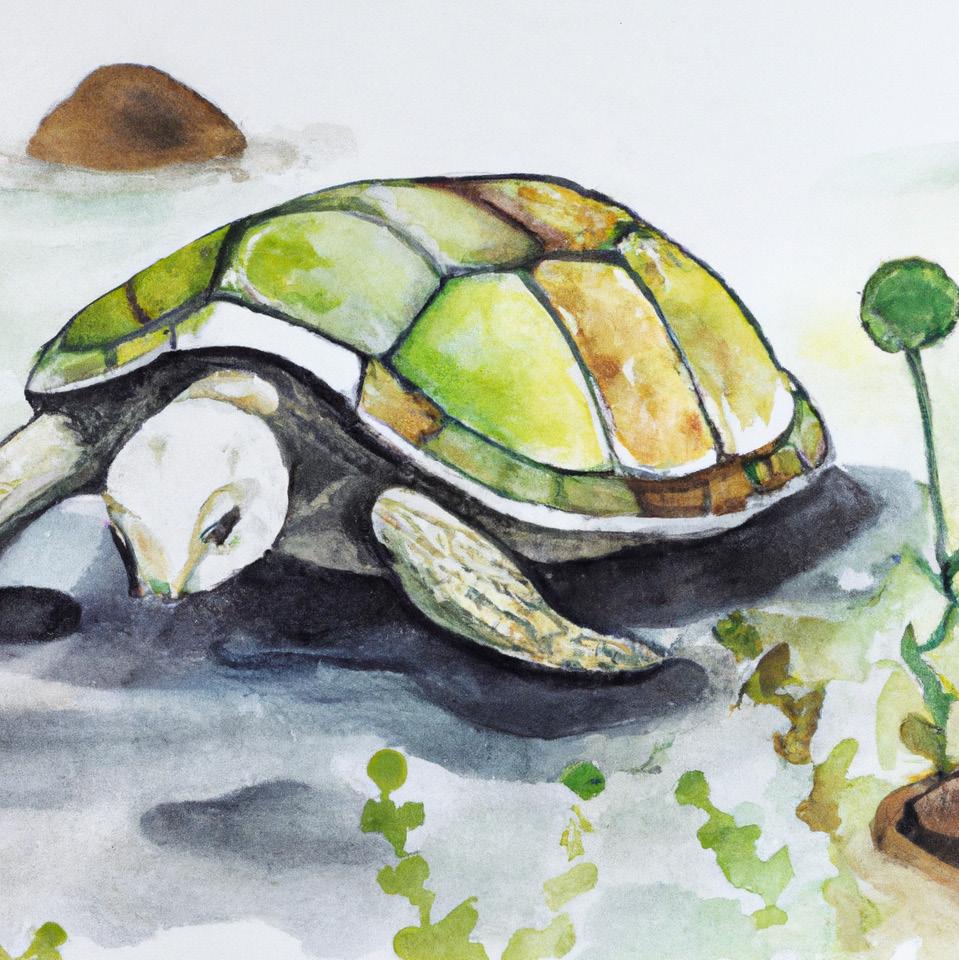
114 |
|
Kunnumpuram, Kochi, India
(Re) - Gaining
Ecological Futures
Figure 5.9 Painting of turtle from the canal
The PLA (Participatory Learning and Action) method helped us frame our work. The tools used opened the conversation with the community and gave us a better understanding on the challenges and opportunities on site, that we integrated into the solutions. Through this methods and with the help of visuals, the community was able to express themselves and present their visions and thoughts of the neighborhood.
This is closely linked to the Participatory Needs Assessment method (PNA), used in the first steps of a project. “PNA gives the right to speak to the people living in local communities and, moreover, it attempts to place the problems and solutions submitted by citizens on the working agendas of the public authorities, which acts as decision-makers.” describes Sandru (2014, p.2). We tried to base our solutions on the rationality of this area based planning, with an inclusive and holistic approach, and identify what could be the drivers of change in the community. To us this was some clear issues, like cleaning the canal, promoting biodiversity, upgrading the waste management system for people to live more sustainable and spare the environment. Also planning for safer streets, and inclusive resilient public spaces programmed for women.
solutions. To tackle those challenges, we set up three goals : the first one is to create inclusive vibrant public space, that are safe and encourage gender equity. This will be made by implementing safe walkable pathways around the neighborhood, create public spaces using pocket spaces on the streets, establish communal water taps and implement community gardens.
The second goal is to have a segregative waste management system with shared waste bins that creates a social and environmentally sustainable neighborhood.
And the third goal is ecological regeneration, that comes with the canal revitalization and green rewilding. The aim is to have long term social and environmental strategies that involves the community in every step. The spatial solutions are all together working towards creating a shared context of meaning for the community, creating purpose, equality and justice.
Those spatial solutions couldn’t be implemented without a great governance structure that helps for the creation and maintenance of the solutions. We identified relevant stakeholders that would be the most relevant to contribute and created some community groups to give ownership and a voice to the locals of the neighborhood.
Our outcomes
Our report touched upon the question of governance, which was a big challenge in the area. Co-governance and local action groups have to be implemented to give more ownership to the community and get an effective maintenance system to keep the area pleasant. The improvements in the area will be closely linked to the improvement of the city in general, as many of the challenges on a small scale are related to a broader system.
Overall, the main issues we noticed on site were concerning the waste management system, the lack of public spaces, the gender inequalities and the threat to the environment. Those four challenges are closely linked together and finding answers for one would help for the improvement of the others as well. The public spaces would therefore become the support of our spatial
Our final word ...
The work that we have done here is just a preview of what could be done in a neighborhood, as an example of a Global South city. Kunnumpuram has a lot of challenges but also the capacity to become a thriving, resilient, and inclusive community. With the suggestions of spatial solutions and governance structure, we only touched upon the surface of the issues and possibilities. A more extensive research following the PLA method and involving the community in every step of the reflection would be valuable for the community and could have a real and meaningful impact on the area.
115
| (Re) - Gaining
Futures
| Kunnumpuram, Kochi, India
Ecological
References and Bibliography
A unique communal harmony in Kochi - The Hindu (2014) The Hindu. Available at: https://www.thehindu.com/news/cities/Kochi/a-unique-communal-harmony-inkochi/article6263278.ece (Accessed: 12 December 2022).
Arnstein, S. (2020) ‘“A Ladder of Citizen Participation”: Journal of the American Institute of Planners (1969)’, in The City Reader. Routledge, pp. 290–302. Barney Johnson, Benjamin Maslin, Bethan Batson, Chinmay Kale, Christopher Adams, Grace Lee, J., Wang, Lucas Theis, Prity Chatterjee, W.A. and CONT, M. (2020) ‘Livea ble Urbanism 2020’, WELSH SCHOOL OF ARCHITECTURE CARDIFF UNIVERISTY, p. 2020.
Bingham, L.B. (2006) ‘The new urban governance: Processes for engaging citizens and stakeholders’, Review of Policy Research, 23(4), pp. 815–826. Britannica. The Editors of Encyclopaedia (2022) Kochi, Encyclopedia Britannica. Available at: https://www.britannica.com/place/Kochi-India (Accessed: 12 December 2022).
Corruption Perceptions Index (2021) Transparency International. Available at: https://www.transparency.org/en/cpi/2021/index/ind (Accessed: 12 December 2022). Dwivedi, R. (2001) ‘Environmental movements in the global south: Issues of livelihood and beyond’, International Sociology, 16(1), pp. 11–31.
Forsyth, A. (2015) ‘What is a walkable place? The walkability debate in urban design’, Urban design international, 20(4), pp. 274–292.
Francis, M. (1989) ‘The urban garden as public space’, Places, 6(1).
Friedman, A.L. and Miles, S. (2006) Stakeholders: Theory and practice. OUP Oxford.
Goal 11 | Department of Economic and Social Affairs (no date). Available at: https://sdgs.un.org/goals/goal11 (Accessed: 12 December 2022).
Hatuka, T. and Saaroni, H. (2013) ‘Resilience of outdoor spaces in an era of climate change: The problem of developing countries’, Sustainability (Switzerland), 5(1), pp. 90–99. Available at: https://doi.org/10.3390/su5010090.
Jacob, J. (2022) Bleak future ahead for Kochi, thanks to global warming- The New Indian Express, The New Indian Express. Available at: https://www.newindianexpress. com/cities/kochi/2022/jan/19/bleak-future-ahead-for-kochi-thanks-to-global-warming-2408430.html (Accessed: 12 December 2022).
Jahnsen, G. (2021) ‘Setting up of Integrated Support Platform for Women Entrepreneurship in Kochi’, (Miwe 2020).
KERALA SOLID WASTE MANAGEMENT PROJECT – (KSWMP) (2022). Available at: https://kswmp.org/ (Accessed: 12 December 2022).
Kern, L. (2021) Feminist city: claiming space in a man-made world. Verso Books.
Kochi climate: weather by month, temperature, precipitation, when to go (2022) Climates To Travel. Available at: https://www.climatestotravel.com/climate/india/kochi (Accessed: 12 December 2022).
Kochi Culture (2013) Maps of India. Available at: https://www.mapsofindia.com/kochi/culture/ (Accessed: 12 December 2022).
Kumar, M.K.S. (2022) Vigilance Finds Corruption To The Tune Of 99 Lakh | Kochi News - Times of India, The Times of India. Available at: https://timesofindia.indiatimes.com/ city/kochi/vigilance-finds-corruption-to-the-tune-of-99-lakh/articleshow/92640684.cms (Accessed: 12 December 2022).
Mani, S. and Singh, S. (2016) ‘Sustainable municipal solid waste management in India: A policy agenda’, Procedia Environmental Sciences, 35, pp. 150–157.
Mishra, S.P. and Mishra, D.P. (2018) ‘Waste generation and management in Anthropocene epoch: an objective appraisal of Indian condition, Int’, Journal of Advance Re search, 6(6), pp. 1109–1129.
Murthy, C. (2010) ‘3rd ICTs and Society Meeting; Paper Session-Inequalities: social, economic and political; Paper 2: Media conver-gence and blogging in exposing corrup tion and fraud in India’, tripleC: Communication, Capitalism \& Critique. Open Access Journal for a Global Sustainable Information Society, 8(2), pp. 143–148.
Nambudiri, S. (2020) Kerala: Soaring mercury, hidden pollution | Kochi News - Times of India, The Times of India. Available at: https://timesofindia.indiatimes.com/city/ kochi/soaring-mercury-hidden-pollution/articleshow/74325895.cms (Accessed: 12 December 2022).
Kunnumpuram, Kochi, India | (Re) - Gaining Ecological Futures
116 |
Narayanan, K. (2021) Kochi canals go to waste- The New Indian Express, The New Indian Express. Available at: https://www.newindianexpress.com/cities/kochi/2021/ may/04/kochi-canalsgo-to-waste-2297979.html (Accessed: 12 December 2022).
New fronts in Kochi to battle corruption, inefficiency - The Hindu (2020) The Hindu. Available at: https://www.thehindu.com/news/cities/Kochi/ new-fronts-in-kochi-to-battle-corruption-inefficiency/article32999314.ece (Accessed: 12 December 2022).
Norberg-Schulz, C. (1979) ‘Genius loci: Towards a phenomenology of architecture’.
O’Donnell, E.C. et al. (2021) ‘International perceptions of urban blue-Green infrastructure: a comparison across four cities’, Water, 13(4), p. 544.
Paul, T. (2011) ‘Space, gender, and fear of crime: Some explorations from Kolkata’, Gender, Technology and Development, 15(3), pp. 411–435.
Raco, M. (2020) ‘Governance, Urban’, International Encyclopedia of Human Geography, pp. 253–258. Available at: https://doi.org/10.1016/B978-0-08-102295-5.10650-X.
Raheem, A. (2013) ‘TOWARDS A SOCIAL LOGIC OF COCHIN, INDIA’.
Relph, E. (1976) Place and placelessness. Pion London.
Roy, A. (2009) ‘Why India cannot plan its cities: Informality, insurgence and the idiom of urbanization’, Planning theory, 8(1), pp. 76–87.
Sandru, C. (2014) ‘Participatory needs assessment in local communities. methodological aspects’, Bulletin of the Transilvania University of Braşov, Series VII: Social Sciences and Law, (2), pp. 97–104.
Sepe, M. and Pitt, M. (2014) ‘The characters of place in urban design’, Urban Design International, 19(3), pp. 215–227.
Sukhtankar, S., Vaishnav, M. and others (2015) ‘Corruption in India: Bridging research evidence and policy options’, in India Policy Forum, pp. 193–276.
Sultana, F. (2020) ‘Embodied intersectionalities of urban citizenship: Water, infrastructure, and gender in the global south’, Annals of the American Association of Geographers, 110(5), pp. 1407–1424.
Terraza, H. et al. (2020) ‘Handbook for Gender-Inclusive Urban Planning and Design’.
Thomas, G. et al. (2014) ‘Analysis of Urban Heat Island in Kochi, India, Using a Modified Local Climate Zone Classification’, Procedia Environmental Sciences, 21, pp. 3–13. Available at: https://doi.org/10.1016/j.proenv.2014.09.002.
Times of India (2022) Csml Plans To Develop Open Spaces | Kochi News - Times of India, The Times of India. Available at: https://timesofindia.indiatimes.com/city/ kochi/csml-plans-to-develop-open-spaces/articleshow/89813037.cms (Accessed: 17 December 2022).
Tóth, Z. (2019) Cast System in India Today, Phiren Amenca. Available at: https://phirenamenca.eu/cast-system-in-india-today/ (Accessed: 12 December 2022).
UN-HABITAT (2020) ‘Climate vulnerability and risk - A guide for community assessment, action planning and implementation’, United Nations Human Settlements Programme [Preprint]. Available at: https://doi.org/10.4324/9780203269275.
Vogel, C. et al. (2016) ‘Environmental problem-solving in South Africa: harnessing creative imaginaries to address’ wicked’challenges and opportunities’, South African Geographical Journal= Suid-Afrikaanse Geografiese Tydskrif, 98(3), pp. 515–530.
Vohra, S. (2022) Risk-informed planning essential to prevent floods in Kochi, Mongabay series: The India Water Story. Available at: https://india.mongabay. com/2022/09/risk-informed-planning-essential-to-prevent-floods-in-kochi/ (Accessed: 12 December 2022).
Watson, V. (2009) ‘“The planned city sweeps the poor away ”: Urban planning and 21st century urbanisation’, Progress in planning, 72(3), pp. 151–193.
White, S. (2011) ‘Depoliticizing development: the uses and abuses of participation’, in The participation reader. Zed Books, pp. 57–69.
117 | Kunnumpuram, Kochi, India | (Re) - Gaining Ecological Futures
List of Figures
Cover Page Kunnumpuram, Kochi (Source: Authorship of Team Kunnumpuram-UEP 2022)
Figure 1.1: The dense streetscape of Kunnumpuram (Source: Authorship of Team Kunnumpuram-UEP 2022)
Figure 1.2: World map (Source: Authorship of Team Kunnumpuram-UEP 2022)
Figure 1.3: The Calvathy canal, Kunnumpuram, Fort Kochi (Source: Authorship of Team Kunnumpuram-UEP 2022)
Figure 1.4: Goats in the street, Kunnumpuram, Fort Kochi (Source: Authorship of Team Kunnumpuram-UEP 2022)
Figure 1.5: State of Kerala in India (Source: Authorship of Team Kunnumpuram-UEP 2022)
Figure 1.6: Image from Kunnumpuram (Source: Authorship of Team Kunnumpuram-UEP 2022)
Figure 1.7: The historical timeline of Kochi (Source: Authorship of Team Kunnumpuram-UEP 2022)
Figure 1.8: Sketch representing issues regarding climate change in Kunnumpuram, Kochi (Source: DALL-E 2)
Figure 1.9: Site area (Source: Authorship of Team Kunnumpuram-UEP 2022)
Figure 1.10: Eravali Canal (Source: Authorship of Team Kunnumpuram-UEP 2022)
Figure 1.11: Typologies at site (Source: Authorship of Team Kunnumpuram-UEP 2022)
Figure 2.1: Participatory workshop, letters from women (Source: Authorship of Team Kunnumpuram-UEP 2022)
Figure 2.2: Participatory workshop (Source: Authorship of Team Kunnumpuram-UEP 2022)
Figure 2.3: Diagram of methods (Source: Authorship of Team Kunnumpuram-UEP 2022)
Figure 2.4: Organization of project work in Kochi - reflectivity and adaptation (Source: Authorship of Team Kunnumpuram-UEP 2022)
Figure 2.5: Fieldwork overview of the process (Source: Authorship of Team Kunnumpuram-UEP 2022)
Figure 2.6: Picture collage of process (Source: Authorship of Team Kunnumpuram-UEP 2022)
Figure 2.7: Our site in Fort Kochi (Source: Authorship of Team Kunnumpuram-UEP 2022)
Figure 2.8: Images of situations at site (Source: Authorship of Team Kunnumpuram-UEP 2022)
Figure 2.9: Indian woman and the letter she wrote during the participatory workshop (Source: Authorship of Team Kunnumpuram-UEP 2022 and Source: DALL-E 2)
Figure 2.10: A view of a street at the site (Source: Authorship of Team Kunnumpuram-UEP 2022)
Figure 2.11: Fish vendor (Source: Authorship of Team Kunnumpuram-UEP 2022)
Figure 2.12: Kunnumpuram (Source: Authorship of Team Kunnumpuram-UEP 2022)
Figure 2.13: Picture with the youth from the workshop (Source: Authorship of Team Kunnumpuram-UEP 2022)
Figure 2.14: Youth with their drawing (Source: Authorship of Team Kunnumpuram-UEP 2022)
Figure 2.15: Drawings from the youth (Source: Authorship of Team Kunnumpuram-UEP 2022)
Figure 2.16: Stakeholder diagram (Source: Authorship of Team Kunnumpuram-UEP 2022)
Figure 2.17: Meeting with the former Mayor- K.J. Sohan (Source: Authorship of Team Kunnumpuram-UEP 2022)
Figure 2.18: Meeting with the ward councilor, T.K. Ashraf (Source: Authorship of Team Kunnumpuram-UEP 2022)
Figure 2.19: Images of participatory workshop (Source: Authorship of Team Kunnumpuram-UEP 2022)
Figure 2.20: Issues at site (Source: Authorship of Team Kunnumpuram-UEP 2022)
Figure 2.21: Workshop at site (Source: Authorship of Team Kunnumpuram-UEP 2022)
Figure 2.21: Workshop at site (Source: Authorship of Team Kunnumpuram-UEP 2022)
Figure 3.1: The Calvathy canal in Kunnumpuram (Source: Authorship of Team Kunnumpuram-UEP 2022)
Figure 3.2: Risks diagram (Source: Authorship of Team Kunnumpuram-UEP 2022)
| Kunnumpuram, Kochi, India | (Re) - Gaining Ecological Futures
118
Figure 3.3: Sketch of site (Source: Source: DALL-E 2022)
Figure 3.4: Girl at the street in Kunnumpuram (Source: Source: DALL-E 2022)
Figure 3.5: Roofscape in Kunnumpuram (Source: Source: DALL-E 2022)
Figure 3.6: Bridge (Source: Authorship of Team Kunnumpuram-UEP 2022)
Figure 3.7: Site at night (Source: Authorship of Team Kunnumpuram-UEP 2022)
Figure 3.8: Diagram of the women and youth’s challenges (Source: Authorship of Team Kunnumpuram-UEP 2022)
Figure 3.9: Gender inequality diagram (Source: Authorship of Team Kunnumpuram-UEP 2022)
Figure 3.10: Drawing of a polluted street illustrating the situation in Kochi (Source: Source: DALL-E 2022)
Figure 3.11: Drawing representing waste dumping in India (Source: Source: DALL-E 2022)
Figure 3.12: Waste management issues diagram (Source: Authorship of Team Kunnumpuram-UEP 2022)
Figure 3.13: Drawing representing the overall atmosphere of an Indian city like Kochi (Source: Source: DALL-E 2022)
Figure 3.14: Polluted canal (Source: Authorship of Team Kunnumpuram-UEP 2022)
Figure 3.15: Overall issues at site (Source: Authorship of Team Kunnumpuram-UEP 2022)
Figure 4.1: Inclusive public space (Source: Authorship of Team Kunnumpuram-UEP 2022)
Figure 4.2: Future image of Kunnumpuram (Source: Authorship of Team Kunnumpuram-UEP 2022)
Figure 4.3: Safe pedestrian friendly streetscape with native greenery (Source: Authorship of Team Kunnumpuram-UEP 2022)
Figure 4.4: Future perspective (Source: Authorship of Team Kunnumpuram-UEP 2022)
Figure 4.5: Placemaking (Source: Authorship of Team Kunnumpuram-UEP 2022)
Figure 4.6: Sketch of shared water taps (Source: Source: DALL-E 2022)
Figure 4.7: Shared water taps in the street (Source: Authorship of Team Kunnumpuram-UEP 2022)
Figure 4.8: Sketch of site (Source: DALL-E 2022)
Figure 4.9: Illustration of urban community garden near the canal (Source: Authorship of Team Kunnumpuram-UEP 2022)
Figure 4.10: Community garden- circular economy (Source: Authorship of Team Kunnumpuram-UEP 2022)
Figure 4.10: Collage of segregated waste bins implemented in the neighborhood (Source: Authorship of Team Kunnumpuram-UEP 2022)
Figure 4.12: Diagram of our circular economic approach (Source: Authorship of Team Kunnumpuram-UEP 2022)
Figure 4.13: Ecological regeneration (Source: Authorship of Team Kunnumpuram-UEP 2022)
Figure 4.14: Map of our spatial solutions (Source: Authorship of Team Kunnumpuram-UEP 2022)
Figure 4.15: Painting of the Calvathy canal (Source: DALL-E 2022)
Figure 5.1: Governance (Source: DALL-E 2022)
Figure 5.2: Diagram regarding involvement of stakeholders in proposals (Source: Authorship of Team Kunnumpuram-UEP 2022)
Figure 5.3: Diagram of stakeholder responsibility (Source: Authorship of Team Kunnumpuram-UEP 2022)
Figure 5.4: Sketch of stakeholder meeting (Source: DALL-E 2022)
Figure 5.5: Diagram regarding strategies of governance towards inclusive public space (Source: Authorship of Team Kunnumpuram-UEP 2022)
Figure 5.6: Diagram regarding strategies of governance towards cleaning the canal (Source: Authorship of Team Kunnumpuram-UEP 2022)
Figure 5.7: Diagram regarding strategies of governance towards sustainable waste management (Source: Authorship of Team Kunnumpuram-UEP 2022)
Figure 5.8: Painting of Kunnumpuram at night (Source: DALL-E 2022)
Figure 5.9: Painting of turtle from the canal (Source: DALL-E 2022)
119 | Kunnumpuram, Kochi, India | (Re) - Gaining Ecological Futures


 (Re) gaining Ecological Futures Kunnumpuram, Kochi, India
Urban Ecological Planning: Project Course Project Report, Autumn 2022
(Re) gaining Ecological Futures Kunnumpuram, Kochi, India
Urban Ecological Planning: Project Course Project Report, Autumn 2022





































 -Maria
-Maria

























 Figure 2. 18 Meeting with the ward councilor, T.K. Ashraf
Figure 2. 17 Meeting with the former Mayor- K.J. Sohan
Figure 2. 18 Meeting with the ward councilor, T.K. Ashraf
Figure 2. 17 Meeting with the former Mayor- K.J. Sohan







 49 | Kunnumpuram, Kochi, India | (Re) - Gaining Ecological Futures
49 | Kunnumpuram, Kochi, India | (Re) - Gaining Ecological Futures






























































 74 | Kunnumpuram, Kochi, India | (Re) - Gaining Ecological Futures
74 | Kunnumpuram, Kochi, India | (Re) - Gaining Ecological Futures





 85 | Kunnumpuram, Kochi, India | (Re) - Gaining Ecological Futures
85 | Kunnumpuram, Kochi, India | (Re) - Gaining Ecological Futures












































 113 | Kunnumpuram, Kochi, India | (Re) - Gaining Ecological Futures
113 | Kunnumpuram, Kochi, India | (Re) - Gaining Ecological Futures

